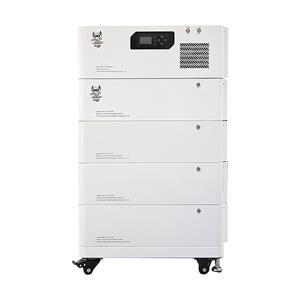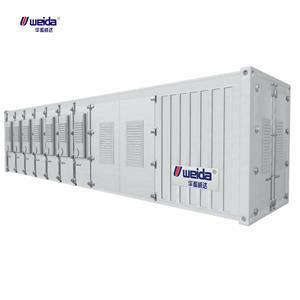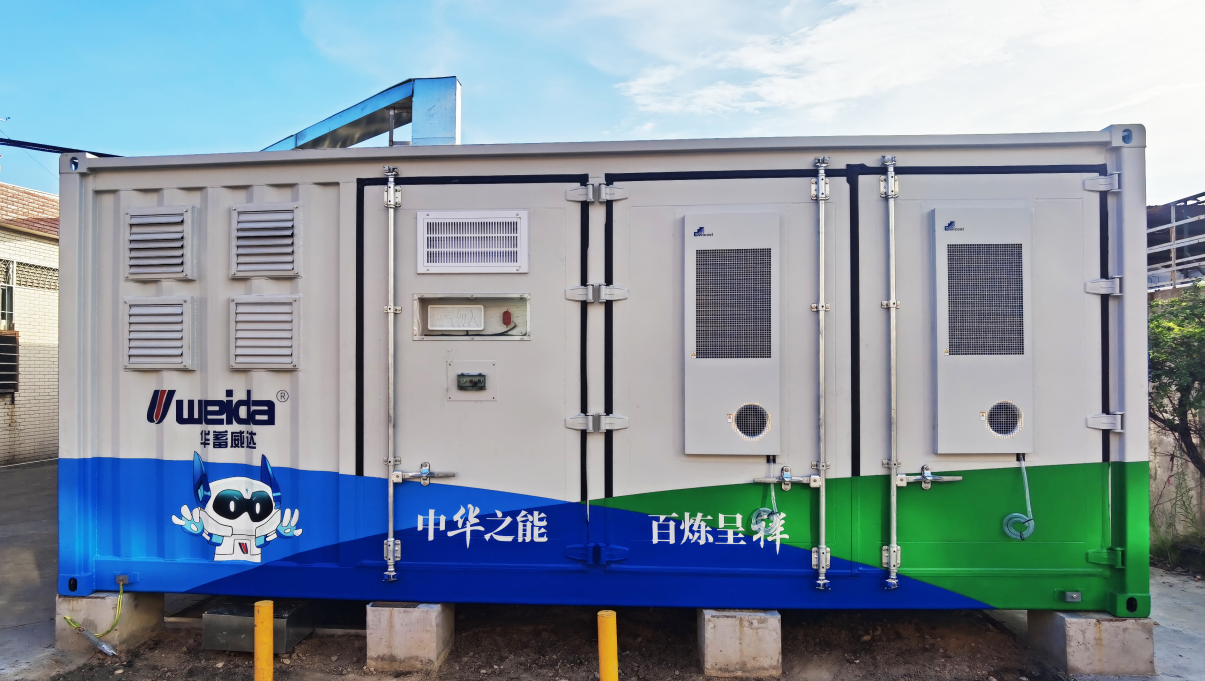Rapid growth in global commercial energy storage
Rapid growth in global commercial energy storage
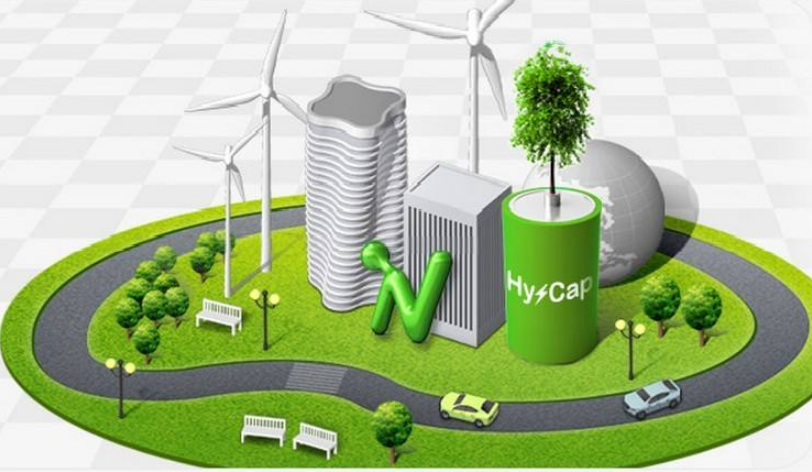
According to the International Energy Agency (IEA), the global installed scale of commercial energy storage has shown rapid growth in recent years. By the end of 2022, the cumulative installed capacity of global commercial energy storage projects that have been put into operation will reach 209.4 gigawatts (GW), a year-on-year increase of 9%. Among them, the installed scale of electrochemical energy storage is 23.2 GW, accounting for 11% of the global commercial energy storage installed scale.
Global Installed Commercial Energy Storage Size (GW)
Year Global Electrochemical
2022 209.4 23.2
2021 190.0 20.0
2020 171.0 17.0
2019 152.0 15.0
2018 133.0 13.0.
Global installed commercial energy storage growth rate (%)
Year Global Electrochemical
2022 9.0 16.0
2021 10.0 10.0
2020 12.0 12.0
2019 13.0 13.0
2018 14.0 14.0
From the perspective of geographical distribution, the global commercial energy storage installation is mainly concentrated in the United States, China, Europe and other regions. Among them, the U.S. is the largest country in the world with the largest installed capacity of commercial energy storage, and by the end of 2022, the cumulative installed capacity of commercial energy storage projects in the U.S. had reached 59.0 GW, accounting for 28% of the global installed capacity of commercial energy storage. China is the second largest country in the world in terms of installed capacity of commercial energy storage. By the end of 2022, the cumulative installed capacity of commercial energy storage projects in China will reach 46.1 GW, accounting for 22% of the global installed capacity of commercial energy storage. Europe is the world's third largest commercial energy storage installed capacity, as of the end of 2022, the cumulative installed capacity of Europe's commissioned commercial energy storage projects reached 34.3 GW, accounting for 16% of the global installed capacity of commercial energy storage.
Geographic Distribution of Global Installed Commercial Energy Storage Size (GW)
Country/Region Global Electrochemical
United States 59.0 25.0
China 46.1 18.0
Europe 34.3 10.0
Australia 10.0 4.0
Korea 8.0 3.0
Japan 7.0 2.0
Other areas 44.0 12.0
Key Drivers of Global Installed Commercial Energy Storage Growth
The rapid growth of global commercial energy storage installations is mainly driven by the following factors:
The acceleration of the global energy transition and the increasing proportion of renewable energy generation are increasing the demand for energy storage.
As the global energy transition accelerates and the proportion of renewable energy generation continues to rise, there is a growing demand for energy storage. In order to meet the demand for access to large-scale renewable energy generation, the scale and capacity of energy storage systems will continue to increase.
At present, the scale and capacity of global commercial energy storage systems are still at a low level. Taking electrochemical energy storage as an example, by the end of 2022, the average size of global electrochemical energy storage systems will be 1.4 MW, and the average capacity will be 4 MWh. with the continuous progress of energy storage technology and the decreasing cost, the scale and capacity of energy storage systems will continue to increase.
In the future, with the construction of large-scale renewable energy power generation projects, the scale and capacity of energy storage systems will reach tens or even hundreds of megawatts. For example, the State Grid Corporation of China has constructed a 100MW/300MWh energy storage system in Inner Mongolia to complement wind and PV power generation.
The increase in the scale and capacity of the energy storage system will provide access to large-scale renewable energy generation and improve the security and stability of the power grid.
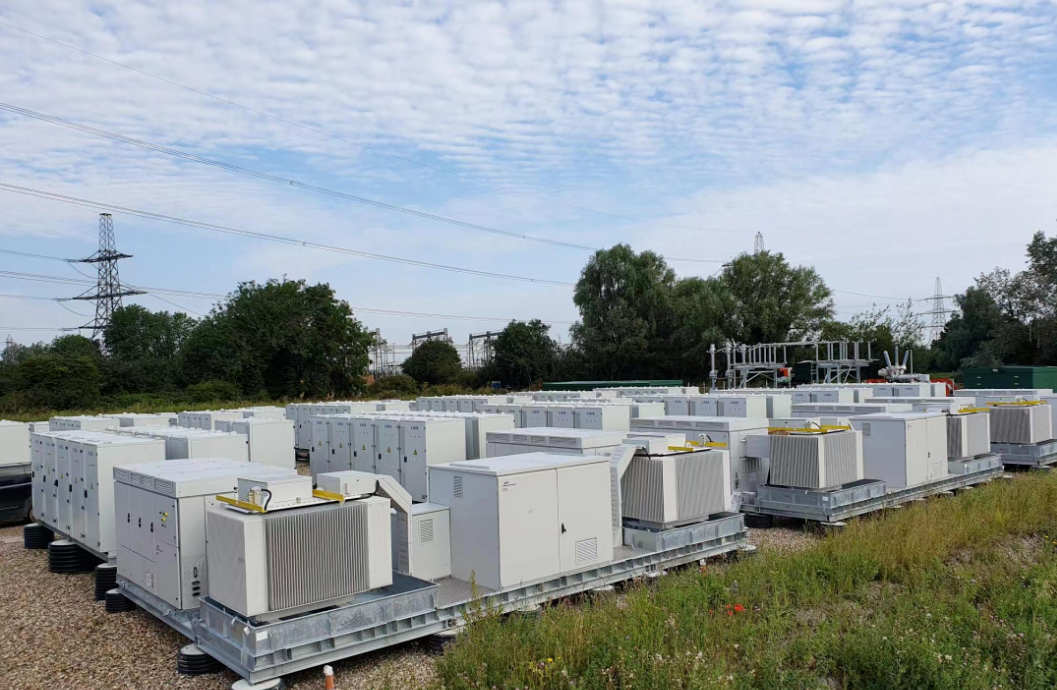
The following are specific trends in energy storage system size and capacity enhancement:
The scale and capacity of grid-side energy storage systems will continue to increase to meet the needs of grid peak shifting, frequency shifting, and standby.
The size and capacity of energy storage systems on the generation side will continue to increase in order to improve the utilization of renewable energy generation.
The size and capacity of customer-side energy storage systems will continue to increase to meet customer load demands and power cost reductions.
The increase in the scale and capacity of energy storage systems will have a significant impact on the power system, driving it towards a cleaner, more efficient and reliable power system.
Continuing advances in energy storage technology and decreasing costs have improved the economics of energy storage systems.
The policy support introduced by governments provides a favorable environment for the development of the energy storage industry.
Future Trends in the Global Commercial Energy Storage Industry
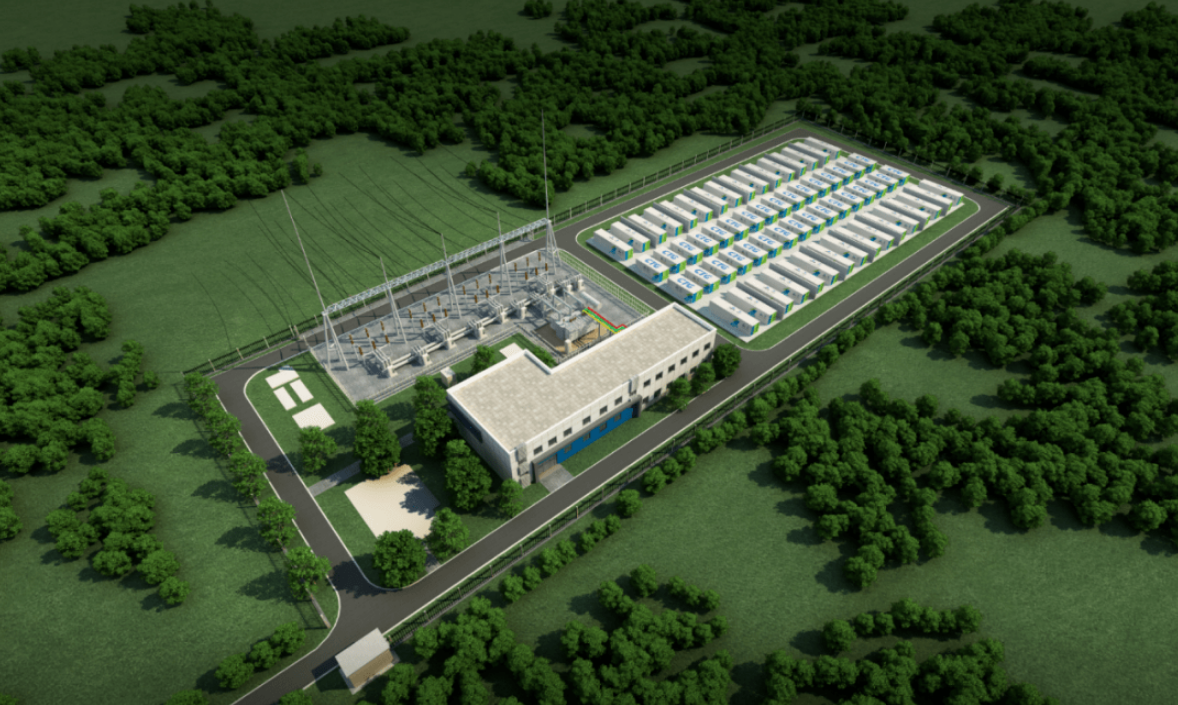
With the acceleration of the global energy transition and the increasing proportion of renewable energy generation, it is expected that the global installed capacity of commercial energy storage will continue to maintain a rapid growth trend. According to the IEA's forecast, by 2030, the global commercial energy storage installed capacity will reach 1.2 TW, with a compound annual growth rate of 25%.
In the course of future development, the global commercial energy storage industry will show the following trends:
The size and capacity of energy storage systems will continue to increase to meet the demand for access to large-scale renewable energy generation.
Energy storage technologies will become more diverse to meet the needs of different application scenarios.
The cost of energy storage will fall further, allowing the economics of energy storage systems to be further improved.
Governments will continue to introduce policy support to provide a favorable environment for the development of the energy storage industry.
Commercial energy storage for peak shaving and valley filling, microgrids, solar distribution and other market applications
With the development of the global economy and the increase in energy consumption, energy security and sustainability have become important issues for governments and enterprises around the world. In the field of energy, commercial energy storage and microgrid technologies are becoming important solutions, especially in peak shaving, power storage, smart grid and other areas with a wide range of application prospects. In this paper, we will analyze the current application status, development trend, and future market prospects of commercial energy storage and microgrid technologies.
Commercial energy storage refers to the use of various energy storage technologies to store electricity in devices such as batteries, supercapacitors, compressed air storage, etc., in case of emergency. Commercial energy storage can help power systems better manage electrical loads and reduce reliance on traditional power systems, while also reducing energy waste and environmental pollution.
State of the art in commercial energy storage
Currently, commercial energy storage technologies mainly include battery energy storage, supercapacitor energy storage, compressed air energy storage, hydrogen storage and other technologies. Among them, battery energy storage is one of the most mature technologies, which is mainly applied to generator sets, grid side and user side. Supercapacitor energy storage technology is mainly used in low-power, high-frequency scenarios, such as buses and factories. Compressed air energy storage technology is mainly used in large power stations and generator sets. Hydrogen storage technology is mainly used in long-distance transportation, mobile energy storage and other fields.
Current status of commercial energy storage applications
Commercial energy storage has a wide range of application prospects in areas such as peak shaving, power storage and smart grids. For example, in peak shaving and valley filling, commercial energy storage can regulate power loads and reduce energy consumption and emissions by storing peak and valley power. In terms of power storage, commercial energy storage can be used as grid-side energy storage equipment to realize power load balance and improve power system stability and reliability. In terms of smart grid, commercial energy storage can be used as distributed energy storage equipment to provide support for distributed energy systems and improve the reliability and flexibility of the power system.
Commercial energy storage can address energy load imbalances by storing peak and valley power. At times of peak power demand, commercial energy storage systems can store electricity and release it when demand decreases. This reduces the burden on the grid and lowers energy consumption and emissions.
Commercial energy storage can also optimize grid operations by regulating electrical loads. When the demand for electricity is low, commercial energy storage systems can store electricity and release it when the demand peaks. This avoids the problem of insufficient power supply and improves the stability and reliability of the power grid.
Commercial energy storage can also reduce carbon emissions by lowering energy consumption. When demand for electricity is low, commercial energy storage systems can store electricity and release it when demand peaks. This reduces reliance on non-renewable energy sources and lowers energy consumption and emissions.
In summary, commercial energy storage can have a positive impact on the power system and the environment by storing peaks and valleys, regulating power loads, and reducing energy consumption and emissions.
Grid-side energy storage equipment refers to the equipment that uses a series of technical means to convert electrical energy into other forms of energy and store it in order to release it into electrical energy supply when needed in order to solve the problems of stability, reliability and security of the power system during the operation of the power grid.
With the wide application of renewable energy and the continuous development of the power system, the application of grid-side energy storage devices is becoming more and more promising. The following are some applications and prospects of grid-side energy storage devices:
Application Scenarios for Grid-Side Energy Storage Devices
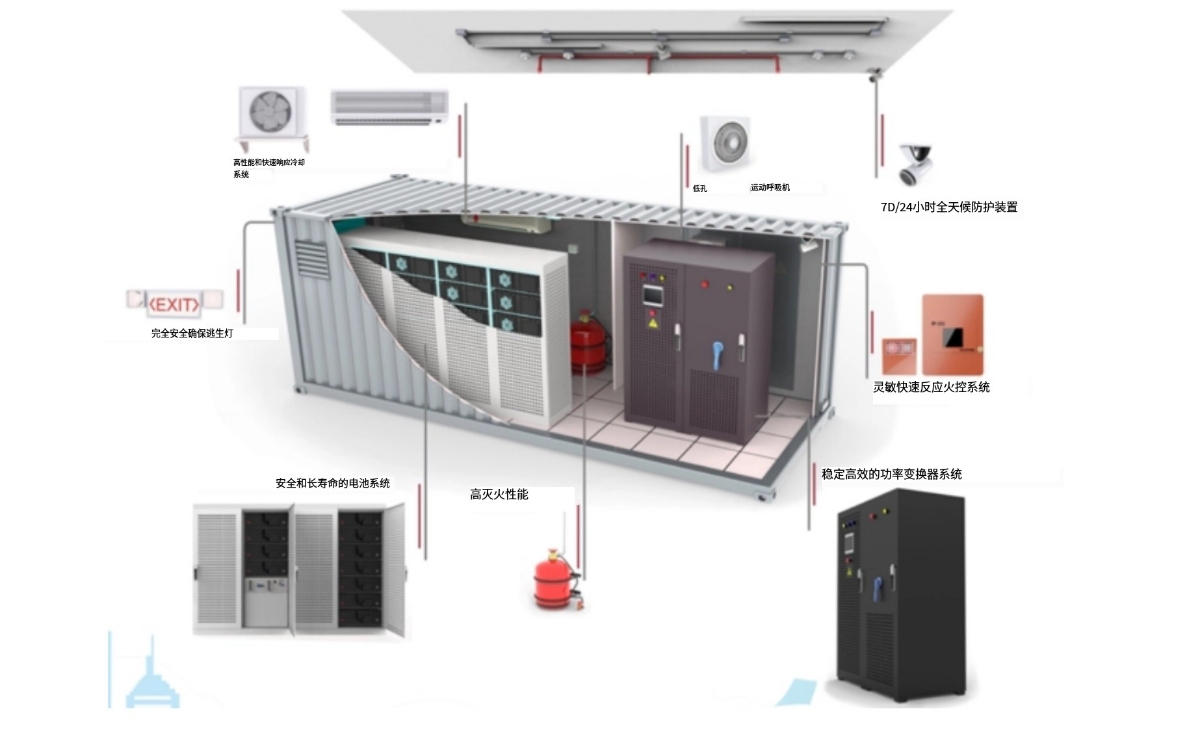
(1) Distributed energy system: A distributed energy system is an energy network consisting of multiple small-scale energy systems distributed in different locations, which can be balanced and optimized by grid-side energy storage devices.
(2) Microgrids: Microgrids are small power networks consisting of one or more independent power systems that can store and balance power through grid-side energy storage devices.
(3) Grid stability guarantee: grid-side energy storage equipment can provide energy storage for the grid, thus playing an important role in grid stability.
(future) prospects
(1) Mature technology: With the continuous progress and development of technology, the performance and cost of grid-side energy storage devices are constantly improving, and the application prospects are becoming broader and broader.
(2) Market demand: As the application of renewable energy continues to expand, the market demand for grid-side energy storage equipment will also continue to increase.
(3) Policy support: Governments are also paying more and more attention to the application of grid-side energy storage equipment in their energy policies, providing policy support and market opportunities for its development.
Overall, the application of grid-side energy storage devices is very promising and will provide important support for the stability, reliability and security of the power system.
A distributed energy system is an energy management model that establishes connections between several different energy facilities and areas to achieve the sharing and optimal use of energy. This model can achieve diversification and decentralization of energy sources, while improving energy reliability and flexibility and reducing energy costs and environmental pollution.
In a distributed energy system, various forms of energy can be included, such as solar, wind, hydro, biomass, etc., which are managed and dispatched through energy storage equipment and intelligent control systems. Such a system can establish microgrids in different areas of various forms of energy and connect to the public power grid through smart gateways to realize energy exchange and sharing.
Distributed energy systems have a broad application prospect. In urban and industrial areas, distributed energy systems can be used to realize the utilization of clean energy and energy conservation. In rural and remote areas, distributed energy systems can be used to realize the basic needs of life such as power supply and lighting. In the energy market, distributed energy systems can improve the reliability and flexibility of energy, reduce energy costs, and at the same time promote the innovation and development of the energy market.
However, distributed energy systems also face a number of challenges and difficulties in their realization. These include problems in the construction and management of energy facilities, technical difficulties in energy transmission and distribution, and policies and regulations in the energy market.
In general, distributed energy system is one of the trends of future energy development, and it has a wide range of application prospects and development potential. With the continuous innovation and development of technology, distributed energy systems will become more and more mature and popularized.
microgrid
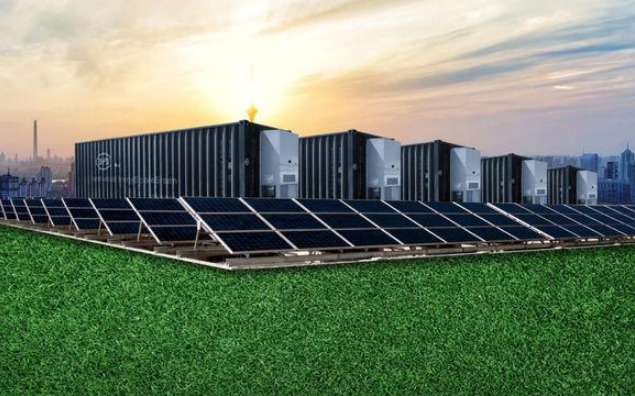
A microgrid is an independent power system consisting of small generating units, energy storage devices, control systems and load equipment. Microgrids can supply power independently and have the ability of self-balancing, self-control and self-protection. Microgrid technology is mainly used in remote areas, peri-urban areas, and inside buildings to meet specific energy needs.
State of the art in microgrid technology
Currently, microgrid technologies mainly include photovoltaic (PV) microgrids, wind microgrids, and gas microgrids. Among them, photovoltaic microgrid is one of the most widely used microgrid technologies, which is mainly applied to remote areas, building roofs and other scenarios. Wind microgrids are mainly applied in remote areas and coastal areas. Gas microgrids are mainly used in areas with more stable gas supply.
Current status of microgrid applications
Microgrids have a wide range of applications in remote areas, peri-urban areas and within buildings. For example, in remote areas, microgrids can provide power supply to local residents, improving the quality of life and economic benefits. In peri-urban areas, microgrids can provide residents with a safe, reliable and economical power supply and reduce the dependence on traditional power systems. Inside buildings, microgrids can provide independent power supply to buildings, improving energy utilization efficiency and reliability.
The application scenarios of microgrid technology include the following:
New Energy Power Generation: With the continuous development of new energy technologies, more and more new energy power generation projects have begun to use energy storage technology to balance the volatility and instability of energy. Commercial energy storage can help new energy power generation projects to better manage and control power output and improve power generation efficiency and stability.
New energy power generation refers to technologies that utilize renewable energy sources such as solar, wind, hydro, geothermal and biomass to generate electricity. New energy power generation has the advantages of being clean, sustainable and low-carbon, and is an important way to realize energy transformation.
Types of new energy generation
According to the principle of power generation, new energy generation can be divided into the following categories:
Solar power: Generation of electricity using solar photovoltaic and solar thermal technologies.
Wind power: generating electricity using wind turbines.
Hydroelectric power generation: the use of hydroelectric generators to produce electricity.
Geothermal energy generation: Generation of electricity from geothermal energy generators.
Biomass power generation: Generation of electricity from biomass fuels.
Advantages of new energy generation
New energy generation has the following advantages:
Clean: New energy generation produces no pollutants and can improve environmental quality.
Distributed energy systems: Distributed energy systems refer to the self-sufficiency of energy by installing solar panels, wind turbines and other equipment in buildings, factories and other areas. Commercial energy storage can help distributed energy systems better manage and control energy output and improve system reliability and stability.
Distributed energy system means that the equipment for power generation, storage and energy use is distributed on the user side to meet the user's energy demand. Distributed energy systems have the following characteristics:
Decentralized: power generation, storage, and energy-using equipment are distributed on the customer side, rather than centralized at the power plant.
Diversification: A wide range of energy sources can be utilized, including renewable and conventional sources.
Flexibility: can be adjusted according to user needs.
Distributed energy systems have the following advantages:
Improvement of energy efficiency: the loss of energy in the transmission process can be reduced.
Reduced energy costs: Reliance on long-distance transmission grids can be reduced, lowering energy costs.
Improvement of grid security: It can improve the grid's peak and frequency regulation capacity and improve grid security.
Promoting the energy transition: The utilization of renewable energy sources can be promoted to facilitate the energy transition.
Distributed energy systems can be used in the following areas:
Households: can provide energy such as electricity and heat for the home.
Businesses: can provide businesses with energy such as electricity and heat.
Communities: can provide communities with energy such as electricity and heat.
Grid: it can provide services such as peaking and frequency regulation for the grid.
Trends in distributed energy systems:
Expanding scale: With the rapid development of new energy generation, distributed energy systems will be widely used and the scale will continue to expand.
Continuing technological advances: The technology of distributed energy systems will continue to advance and costs will continue to fall.
Increasing policy support: Governments will introduce policies to support the development of distributed energy systems.
Distributed energy system is an important part of the future energy system and will play an important role in promoting energy transformation, improving energy utilization efficiency and reducing energy costs.
Industrial production: Commercial energy storage can be applied in industrial production to provide back-up power for factories and ensure the stable operation of production equipment. At the same time, commercial energy storage can also help factories to realize energy storage and deployment, and improve the efficiency of energy utilization.

Commercial energy storage can be used in many areas of industrial production, including:
Peak shaving and valley filling: Utilizing energy storage systems to reduce the cost of electricity for industrial companies by charging when electricity prices are low and discharging when they are high.
Emergency Backup: Utilizing the energy storage system to provide emergency backup power in the event of a power outage in an industrial enterprise to ensure production and life safety.
Power Quality Improvement: Utilizing the energy storage system to regulate the power, improve the power quality of industrial enterprises and increase productivity.
Renewable Energy Utilization: Utilizing energy storage systems to cooperate with renewable energy generation to improve the utilization rate of renewable energy.
The following are specific examples of commercial energy storage applied to industrial production:
A steel mill utilizing an energy storage system to shave peaks and fill valleys can save about $1 million a year in electricity costs.
A chemical plant utilizes an energy storage system for emergency back-up to ensure production continuity.
A data center used an energy storage system to improve power quality and increase server operating efficiency.
A photovoltaic power plant using an energy storage system to increase the utilization of renewable energy can reduce carbon emissions by about 10,000 tons per year.
As the energy transition accelerates, the demand for energy storage in industrial enterprises will continue to grow. With the advantages of high flexibility and low cost, commercial energy storage will play an increasingly important role in industrial production.
The following are the potential advantages of commercial energy storage for industrial applications:
Reducing the cost of electricity: Commercial energy storage can help industrial companies reduce the cost of electricity by charging when electricity prices are low and discharging when they are high.
Commercial energy storage can help industrial companies reduce their power costs, mainly through the following ways:
Peak shaving: Commercial energy storage can be utilized to reduce the cost of electricity for industrial firms by charging when electricity prices are low and discharging when they are high.
Emergency Backup: Commercial energy storage can provide an emergency backup power source for industrial enterprises to safeguard production and life, thus reducing downtime losses for industrial enterprises.
Power Quality Improvement: Commercial energy storage can regulate power to improve power quality and productivity for industrial companies.
Renewable Energy Utilization: Commercial energy storage can be used in conjunction with renewable energy generation to increase the utilization of renewable energy, thereby reducing carbon emissions from industrial companies.
Here are specific examples of commercial energy storage helping industrial companies reduce their power costs:
A steel mill utilizing an energy storage system to shave peaks and fill valleys can save about $1 million a year in electricity costs.
A chemical plant utilizes an energy storage system for emergency back-up to ensure production continuity.
A data center used an energy storage system to improve power quality and increase server operating efficiency.
A photovoltaic power plant using an energy storage system to increase the utilization of renewable energy can reduce carbon emissions by about 10,000 tons per year.
As the energy transition accelerates, the demand for energy storage in industrial enterprises will continue to grow. Commercial energy storage, with its advantages of high flexibility and low cost, will play an increasingly important role in industrial enterprises.
Here are the potential benefits of commercial energy storage to help industrial companies reduce their power costs:
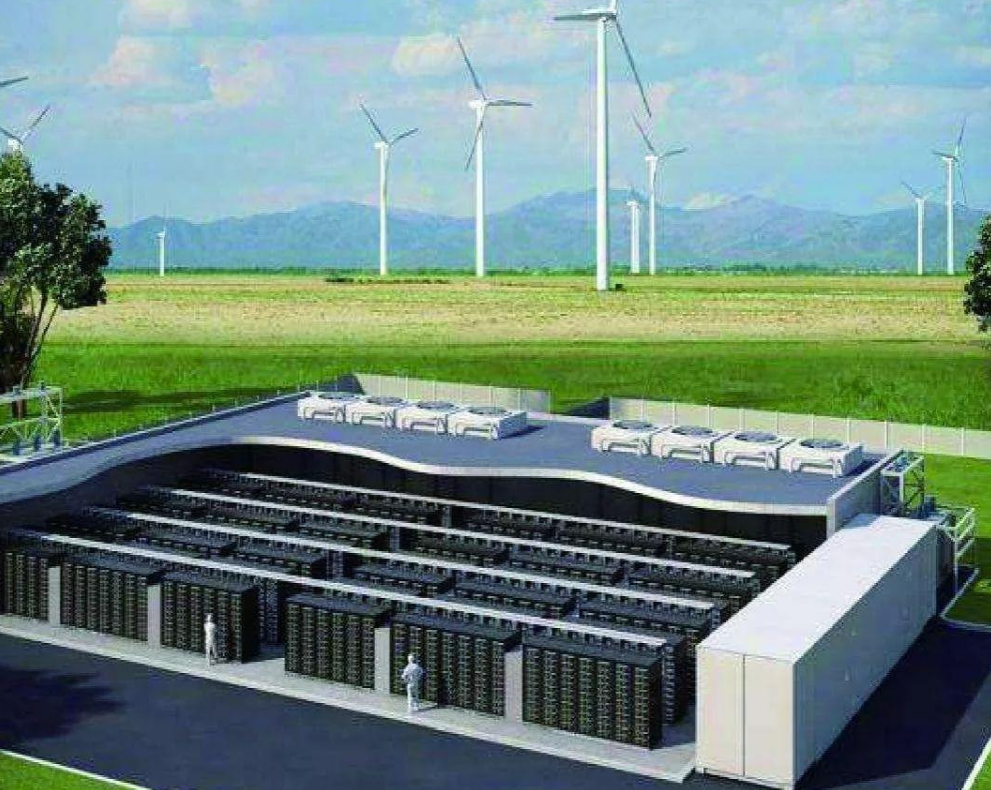
Reducing power costs: Commercial energy storage can help industrial companies reduce their power costs by charging when power prices are low and discharging when power prices are high.
Enhance productivity: Commercial energy storage can enhance productivity by providing a stable and reliable supply of electricity to industrial companies.
Improve the environment: Commercial energy storage can be used in conjunction with renewable energy generation to increase the utilization of renewable energy, thereby reducing carbon emissions.
The use of commercial energy storage in industrial companies will have the following positive impacts:
Reduced operating costs for industrial companies
Enhancement of productivity in industrial enterprises
Reducing carbon emissions from industrial enterprises
Commercial energy storage is an important energy security for industrial enterprises and will play an important role in promoting green development of industrial enterprises.
The following are specific recommendations for commercial energy storage to help industrial companies reduce their power costs:
Industrial enterprises should reasonably choose the type, size and configuration of the energy storage system according to their own needs.
Industrial enterprises should strengthen the management and maintenance of the energy storage system to ensure the normal operation of the energy storage system.
The government should introduce relevant policies to guide and support industrial enterprises to apply energy storage systems.
Enhance productivity: Commercial energy storage can enhance productivity by providing a stable and reliable supply of electricity to industrial companies.
Commercial energy storage can help industrial companies improve productivity in the following ways:
Peak shaving: Commercial energy storage can be utilized to reduce the cost of electricity for industrial firms and increase productivity by charging when electricity prices are low and discharging when they are high.
Emergency Backup: Commercial energy storage can provide an emergency backup power source for industrial enterprises to safeguard production and life, thus reducing downtime losses for industrial enterprises and improving productivity.
Power Quality Improvement: Commercial energy storage can regulate power to improve the quality of power for industrial companies and improve the operating efficiency of production equipment, thereby increasing productivity.
Renewable Energy Utilization: Commercial energy storage can be used in conjunction with renewable energy generation to increase the utilization of renewable energy, thereby reducing carbon emissions and increasing productivity in industrial enterprises.
Below are specific examples of commercial energy storage helping industrial companies improve productivity:
A steel plant utilizes an energy storage system to cut peaks and fill valleys, saving about 1 million yuan per year in electricity costs, reducing power costs and improving productivity.
A chemical plant utilizes an energy storage system for emergency backup to ensure production continuity, reduce downtime losses, and improve productivity.
A data center used an energy storage system to improve the quality of power and increase the efficiency of server operations, which led to increased productivity.
A photovoltaic power station uses an energy storage system to improve the utilization of renewable energy, reducing carbon emissions by about 10,000 tons per year, lowering the cost of carbon emissions and improving productivity.
As the energy transition accelerates, the demand for energy storage in industrial enterprises will continue to grow. Commercial energy storage, with its advantages of high flexibility and low cost, will play an increasingly important role in industrial enterprises.
Here are the potential benefits of commercial energy storage to help industrial companies improve productivity:
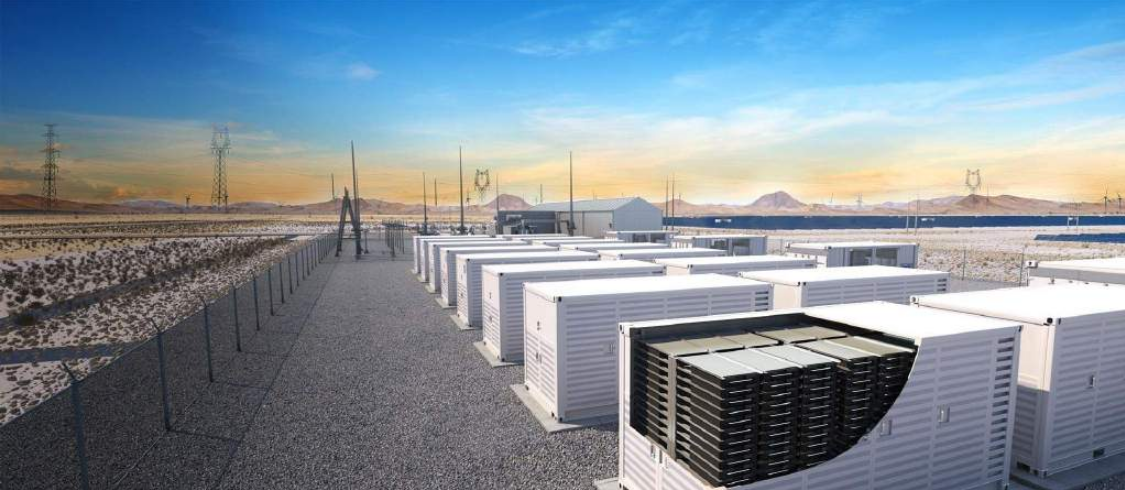
Reducing power costs: Commercial energy storage can help industrial companies reduce their power costs and increase productivity by helping them charge when power prices are low and discharge when they are high.
Enhance productivity: Commercial energy storage can enhance productivity by providing a stable and reliable supply of electricity to industrial companies.
Improve the environment: Commercial energy storage can be used in conjunction with renewable energy generation to increase the utilization of renewable energy, thereby reducing carbon emissions and improving productivity.
The use of commercial energy storage in industrial companies will have the following positive impacts:
Reduced operating costs for industrial companies
Enhancement of productivity in industrial enterprises
Reducing carbon emissions from industrial enterprises
Commercial energy storage is an important energy security for industrial enterprises and will play an important role in promoting green development of industrial enterprises.
The following are specific recommendations for commercial energy storage to help industrial companies improve productivity:
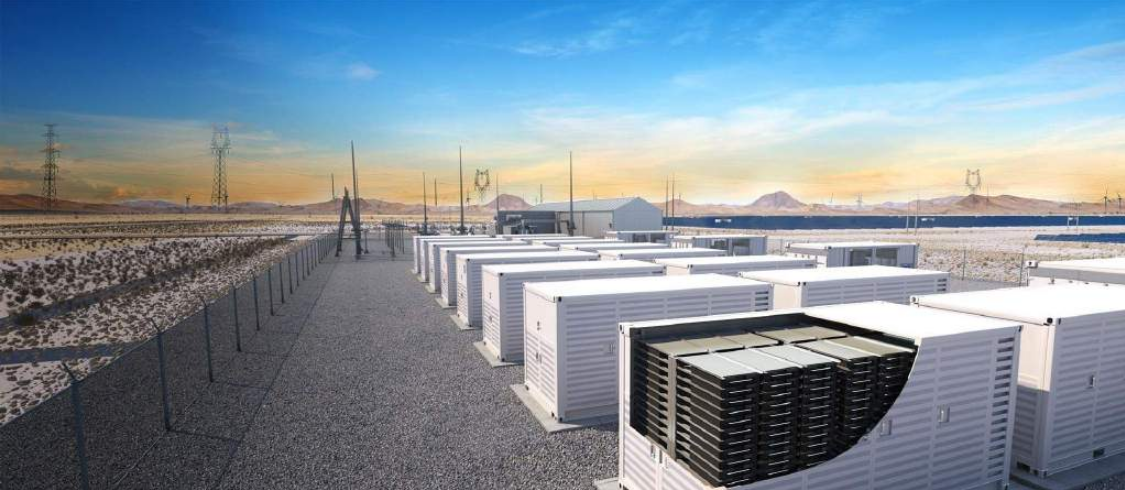
Industrial enterprises should reasonably choose the type, size and configuration of the energy storage system according to their own needs.
Industrial enterprises should strengthen the management and maintenance of the energy storage system to ensure the normal operation of the energy storage system.
The government should introduce relevant policies to guide and support industrial enterprises to apply energy storage systems.
Specifically, the ways in which commercial energy storage can help industrial companies improve productivity include:
Improve the operational efficiency of production equipment: Commercial energy storage can provide industrial enterprises with a stable and reliable power supply and improve the operational efficiency of production equipment, thus enhancing productivity.
Reduce Downtime Losses: Commercial energy storage can provide emergency backup power for industrial companies, guaranteeing continuity of production and reducing downtime losses, thus improving productivity.
Reduced power costs: Commercial energy storage can be utilized to reduce power costs for industrial companies and increase productivity by charging when power prices are low and discharging when power prices are high.
Increase Renewable Energy Utilization: Commercial energy storage can be used in conjunction with renewable energy generation to increase the utilization of renewable energy, thereby reducing carbon emissions and increasing productivity.
Improve the environment: Commercial energy storage can be used in conjunction with renewable energy generation to increase the utilization of renewable energy, thereby reducing carbon emissions.
Commercial energy storage can help industrial companies improve the environment in the following ways:
Increase renewable energy utilization: Commercial energy storage can be used in conjunction with renewable energy generation to increase the utilization of renewable energy, thereby reducing carbon emissions.
Reducing power demand: Commercial energy storage can help industrial companies reduce carbon emissions by shaving peaks and valleys and reducing power demand.
Improve productivity: Commercial energy storage can improve the productivity of industrial companies, thereby reducing carbon emissions from the production process.
Here are specific examples of commercial energy storage helping industrial companies improve their environment:
A steel plant uses an energy storage system in conjunction with photovoltaic power generation to increase renewable energy utilization and reduce carbon emissions by about 10,000 tons per year.
A chemical plant uses an energy storage system to shave peaks and fill valleys, reducing electricity demand and cutting carbon emissions by about 5,000 tons per year.
A data center uses an energy storage system to improve productivity and reduce carbon emissions during production, which can reduce carbon emissions by about 3,000 tons per year.
As the energy transition accelerates, the demand for energy storage in industrial enterprises will continue to grow. Commercial energy storage, with its advantages of high flexibility and low cost, will play an increasingly important role in industrial enterprises.
Here are the potential benefits of commercial energy storage to help industrial companies improve their environment:
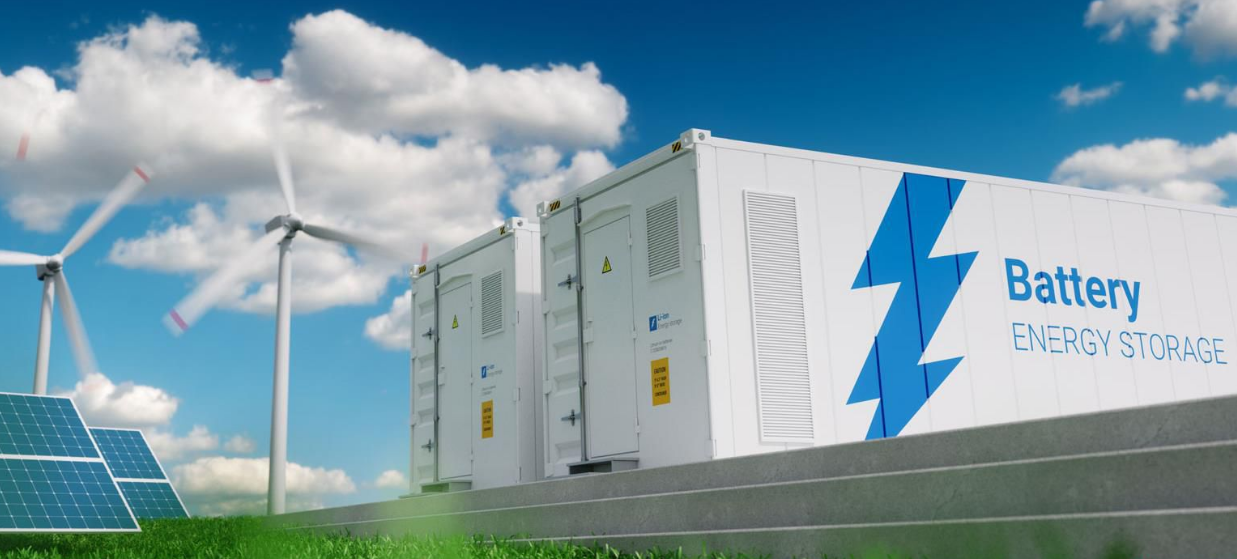
Reduce carbon emissions: Commercial energy storage can be used in conjunction with renewable energy generation to increase the utilization of renewable energy, thereby reducing carbon emissions.
Improve energy efficiency: Commercial energy storage can improve the productivity of industrial companies, thereby reducing carbon emissions from the production process.
Improvement of environmental quality: Reducing carbon emissions improves air and water quality, thereby improving environmental quality.
The use of commercial energy storage in industrial companies will have the following positive impacts:
Reducing carbon emissions from industrial enterprises
Improving energy efficiency in industrial enterprises
Improvement of environmental quality
Commercial energy storage is an important means for industrial enterprises to realize green development and has a broad application prospect.
The following are specific recommendations for commercial energy storage to help industrial companies improve their environment:
Industrial enterprises should actively apply commercial energy storage to improve the utilization of renewable energy and reduce carbon emissions.
The government should introduce relevant policies to guide and support industrial enterprises to apply commercial energy storage.
Specifically, ways in which commercial energy storage can help industrial companies improve the environment include:
Increase renewable energy utilization: Commercial energy storage can be used in conjunction with renewable energy generation to increase the utilization of renewable energy, thereby reducing carbon emissions.
Reducing power demand: Commercial energy storage can help industrial companies reduce carbon emissions by shaving peaks and valleys and reducing power demand.
Increased productivity: Commercial energy storage can increase the productivity of industrial companies, thereby reducing carbon emissions from the production process.
The use of commercial energy storage in industrial production will have the following positive impacts:
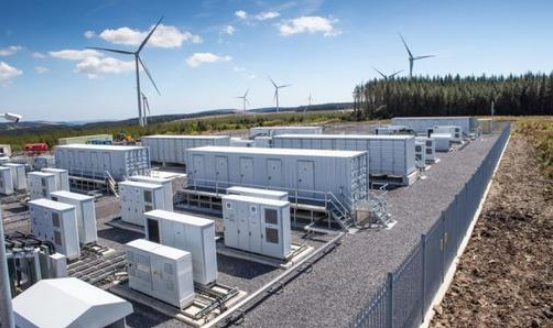
Reduced operating costs for industrial companies
Commercial energy storage can reduce operating costs for industrial companies, mainly through the following ways:
Peak shaving: Commercial energy storage can be utilized to reduce the cost of electricity for industrial firms by charging when electricity prices are low and discharging when they are high.
Emergency Backup: Commercial energy storage can provide an emergency backup power source for industrial enterprises to safeguard production and life, thus reducing downtime losses for industrial enterprises.
Power Quality Improvement: Commercial energy storage can regulate power to improve the quality of power for industrial companies and increase the operating efficiency of production equipment, thereby reducing the operating costs of industrial companies.
Renewable Energy Utilization: Commercial energy storage can be used in conjunction with renewable energy generation to increase the utilization of renewable energy, thereby reducing the cost of carbon emissions for industrial companies.
The following are specific examples of how commercial energy storage has reduced operating costs for industrial companies:
A steel mill utilizing an energy storage system to shave peaks and fill valleys can save about $1 million a year in electricity costs.
A chemical plant utilized an energy storage system for emergency backup to ensure production continuity, reduce downtime losses, and save about $500,000 per year.
A data center used an energy storage system to improve power quality and increase server operating efficiency, thereby reducing operating costs.
A photovoltaic power plant uses an energy storage system to increase the utilization of renewable energy, reducing carbon emissions by about 10,000 tons per year and lowering the cost of carbon emissions.
As the energy transition accelerates, the demand for energy storage in industrial enterprises will continue to grow. Commercial energy storage, with its advantages of high flexibility and low cost, will play an increasingly important role in industrial enterprises.
Here are the potential benefits of commercial energy storage to reduce operating costs for industrial companies:
Reduce power costs: Commercial energy storage can help industrial companies reduce their power costs by charging when power prices are low and discharging when power prices are high.
Enhance productivity: Commercial energy storage can enhance productivity by providing a stable and reliable supply of electricity to industrial companies.
Improve the environment: Commercial energy storage can be used in conjunction with renewable energy generation to increase the utilization of renewable energy, thereby reducing carbon emissions.
The use of commercial energy storage in industrial companies will have the following positive impacts:
Reduced operating costs for industrial companies
Enhancement of productivity in industrial enterprises
Reducing carbon emissions from industrial enterprises
Commercial energy storage is an important energy security for industrial enterprises and will play an important role in promoting green development of industrial enterprises.
The following are specific recommendations for commercial energy storage to reduce operating costs for industrial companies:

Industrial enterprises should reasonably choose the type, size and configuration of the energy storage system according to their own needs.
Industrial enterprises should strengthen the management and maintenance of the energy storage system to ensure the normal operation of the energy storage system.
The government should introduce relevant policies to guide and support industrial enterprises to apply energy storage systems.
Specifically, ways in which commercial energy storage can help industrial companies reduce operating costs include:
Improve the operational efficiency of production equipment: Commercial energy storage can provide industrial enterprises with a stable and reliable power supply, improve the operational efficiency of production equipment, and thus reduce the operating costs of industrial enterprises.
Reduce Downtime Losses: Commercial energy storage can provide emergency backup power for industrial companies, guaranteeing production continuity and reducing downtime losses, thus reducing the operating costs of industrial companies.
Reducing the cost of electricity: Commercial energy storage can reduce the cost of electricity for industrial companies by taking advantage of charging when electricity prices are low and discharging when they are high.
Improve the utilization of renewable energy: Commercial energy storage can work with renewable energy generation to improve the utilization of renewable energy, thus reducing the cost of carbon emissions for industrial companies.
Enhancement of productivity in industrial enterprises

Commercial energy storage can enhance the productivity of industrial companies in the following ways:
Improve the operational efficiency of production equipment: Commercial energy storage can provide industrial enterprises with a stable and reliable power supply and improve the operational efficiency of production equipment, thus enhancing productivity.
Reduce Downtime Losses: Commercial energy storage can provide emergency backup power for industrial companies, guaranteeing production continuity and reducing downtime losses, thus improving productivity.
Reduced power costs: Commercial energy storage can be utilized to charge when power prices are low and discharge when power prices are high, thereby reducing power costs and increasing productivity for industrial companies.
Increase Renewable Energy Utilization: Commercial energy storage can be used in conjunction with renewable energy generation to increase the utilization of renewable energy, thereby reducing carbon emissions and increasing productivity.
The following are specific examples of how commercial energy storage has improved the productivity of industrial companies:
A steel mill utilizes an energy storage system to improve the operational efficiency of its production equipment, which can increase production by about 10% per year.
A chemical plant utilizes an energy storage system to reduce downtime losses and increase production by about 5% per year.
A data center uses an energy storage system to reduce power costs and increase production by about 3% per year.
A photovoltaic power station uses an energy storage system to improve the utilization of renewable energy, reducing carbon emissions by about 10,000 tons per year, lowering the cost of carbon emissions and improving productivity.
As the energy transition accelerates, the demand for energy storage in industrial enterprises will continue to grow. Commercial energy storage, with its advantages of high flexibility and low cost, will play an increasingly important role in industrial enterprises.
The following are the potential benefits of commercial energy storage to enhance the productivity of industrial companies:
Reducing power costs: Commercial energy storage can help industrial companies reduce their power costs and increase productivity by helping them charge when power prices are low and discharge when they are high.
Enhance productivity: Commercial energy storage can enhance productivity by providing a stable and reliable supply of electricity to industrial companies.
Improve the environment: Commercial energy storage can be used in conjunction with renewable energy generation to increase the utilization of renewable energy, thereby reducing carbon emissions.
The use of commercial energy storage in industrial companies will have the following positive impacts:
Reduced operating costs for industrial companies
Enhancement of productivity in industrial enterprises
Reducing carbon emissions from industrial enterprises
Commercial energy storage is an important energy security for industrial enterprises and will play an important role in promoting green development of industrial enterprises.
The following are specific recommendations for commercial energy storage to improve the productivity of industrial companies:
Industrial enterprises should reasonably choose the type, size and configuration of the energy storage system according to their own needs.
Industrial enterprises should strengthen the management and maintenance of the energy storage system to ensure the normal operation of the energy storage system.
The government should introduce relevant policies to guide and support industrial enterprises to apply energy storage systems.
Specifically, the ways in which commercial energy storage can help industrial companies improve productivity include:
Improve the operational efficiency of production equipment: Commercial energy storage can provide industrial enterprises with a stable and reliable power supply and improve the operational efficiency of production equipment, thus enhancing productivity.
Reduce Downtime Losses: Commercial energy storage can provide emergency backup power for industrial companies, guaranteeing continuity of production and reducing downtime losses, thus improving productivity.
Reduced power costs: Commercial energy storage can be utilized to charge when power prices are low and discharge when power prices are high, thereby reducing power costs and increasing productivity for industrial companies.
Increase Renewable Energy Utilization: Commercial energy storage can be used in conjunction with renewable energy generation to increase the utilization of renewable energy, thereby reducing carbon emissions and increasing productivity.
Reducing carbon emissions from industrial enterprises

Commercial energy storage can reduce carbon emissions from industrial companies, mainly through the following ways:
Increase renewable energy utilization: Commercial energy storage can be used in conjunction with renewable energy generation to increase the utilization of renewable energy, thereby reducing carbon emissions.
Reducing power demand: Commercial energy storage can help industrial companies reduce carbon emissions by shaving peaks and valleys and reducing power demand.
Improve productivity: Commercial energy storage can improve the productivity of industrial companies, thereby reducing carbon emissions from the production process.
The following are specific examples of how commercial energy storage has reduced carbon emissions in industrial companies:
A steel plant uses an energy storage system in conjunction with photovoltaic power generation to increase renewable energy utilization and reduce carbon emissions by about 10,000 tons per year.
A chemical plant uses an energy storage system to shave peaks and fill valleys, reducing electricity demand and cutting carbon emissions by about 5,000 tons per year.
A data center uses an energy storage system to improve productivity and reduce carbon emissions during production, which can reduce carbon emissions by about 3,000 tons per year.
As the energy transition accelerates, the demand for energy storage in industrial enterprises will continue to grow. Commercial energy storage, with its advantages of high flexibility and low cost, will play an increasingly important role in industrial enterprises.
Here are the potential benefits of commercial energy storage to reduce carbon emissions from industrial companies:
Reduce carbon emissions: Commercial energy storage can be used in conjunction with renewable energy generation to increase the utilization of renewable energy, thereby reducing carbon emissions.
Improve energy efficiency: Commercial energy storage can improve the productivity of industrial companies, thereby reducing carbon emissions from the production process.
Improvement of environmental quality: Reducing carbon emissions improves air and water quality, thereby improving environmental quality.
The use of commercial energy storage in industrial companies will have the following positive impacts:
Reducing carbon emissions from industrial enterprises
Improving energy efficiency in industrial enterprises
Improvement of environmental quality
Commercial energy storage is an important means for industrial enterprises to realize green development and has a broad application prospect.
The following are specific recommendations for commercial energy storage to reduce carbon emissions from industrial companies:
Industrial enterprises should actively apply commercial energy storage to improve the utilization of renewable energy and reduce carbon emissions.
The government should introduce relevant policies to guide and support industrial enterprises to apply commercial energy storage.
Specifically, the ways in which commercial energy storage can help industrial companies reduce their carbon emissions include:
Increase renewable energy utilization: Commercial energy storage can be used in conjunction with renewable energy generation to increase the utilization of renewable energy, thereby reducing carbon emissions.
Reducing power demand: Commercial energy storage can help industrial companies reduce carbon emissions by shaving peaks and valleys and reducing power demand.
Increased productivity: Commercial energy storage can increase the productivity of industrial companies, thereby reducing carbon emissions from the production process.
Commercial energy storage is an important energy security in industrial production and will play an important role in promoting the green development of industrial enterprises.
Yes, commercial energy storage is an important energy security in industrial production and will play an important role in promoting the green development of industrial enterprises.
Commercial energy storage offers the following advantages:
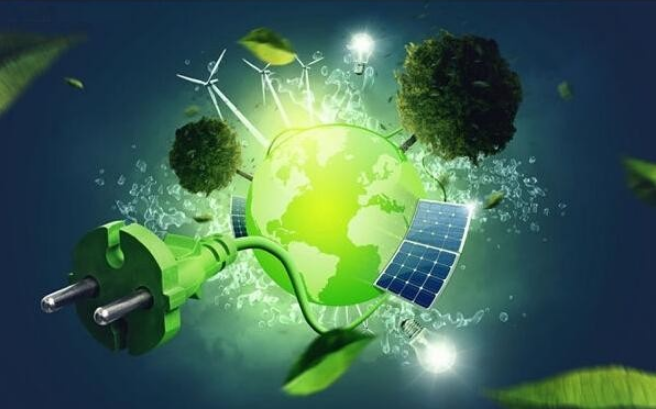
Strong flexibility: Commercial energy storage can be charged and discharged according to demand, with strong flexibility to meet the various needs of industrial enterprises.
Low cost: As technology advances, the cost of commercial energy storage is declining and becoming more affordable.
High safety: Commercial energy storage adopts advanced technology with high safety to ensure the safety of industrial production.
Commercial energy storage can help industrial companies go green in the following ways:
Reducing the cost of electricity: Commercial energy storage can help industrial companies reduce the cost of electricity by shaving peaks and valleys and reducing the demand for electricity.
Improve productivity: Commercial energy storage can provide a stable and reliable supply of electricity to industrial companies, improving the operational efficiency of production equipment and thus increasing productivity.
Reduce carbon emissions: Commercial energy storage can be used in conjunction with renewable energy generation to increase the utilization of renewable energy, thereby reducing carbon emissions.
With the acceleration of energy transition, the demand for energy storage in industrial enterprises will continue to grow. With the advantages of high flexibility and low cost, commercial energy storage will play an increasingly important role in industrial enterprises and promote their green development.
The following are specific applications of commercial energy storage in the greening of industrial companies:
Peak shaving: Commercial energy storage can be utilized to reduce the cost of electricity for industrial firms by charging when electricity prices are low and discharging when they are high.
Emergency Backup: Commercial energy storage can provide an emergency backup power source for industrial companies to ensure production continuity.
Renewable Energy Utilization: Commercial energy storage can be used in conjunction with renewable energy generation to increase the utilization of renewable energy, thereby reducing carbon emissions.
Industrial enterprises should actively apply commercial energy storage to promote green development of industrial enterprises.
Buildings: Microgrids can be applied in buildings to provide power and energy storage functions. Through the microgrid system, buildings can realize self-sufficiency in energy, and energy storage technology can also be used to balance the volatility and instability of energy and improve the efficiency of energy use in buildings.
Microgrids can be used in a number of areas of a building, including:
Peak shaving: the use of microgrids to reduce the cost of electricity for buildings by charging when electricity prices are low and discharging when they are high.
Emergency Backup: Utilizing microgrids to provide emergency backup power in the event of a power outage in a building to ensure life and work safety.
Utilization of renewable energy: Utilization of microgrids in conjunction with renewable energy generation to improve the utilization of renewable energy.
Power Quality Improvement: Utilizing microgrids to regulate power, improve power quality in buildings and increase the efficiency of equipment operation.
The following are specific examples of microgrids applied to buildings:
A large shopping mall can save about $1 million a year in electricity costs by using a microgrid to cut peaks and fill valleys.
One hospital utilized a microgrid for emergency backup to ensure continuity of care.
A data center using microgrid renewable energy use can reduce carbon emissions by about 10,000 tons per year.
A residential community utilizes microgrid power quality improvements to enhance the quality of life for its residents.
As the energy transition accelerates, the demand for microgrids in buildings will continue to grow. Microgrids, with their advantages of flexibility and low cost, will play an increasingly important role in buildings.
The following are potential benefits of microgrids applied to buildings:
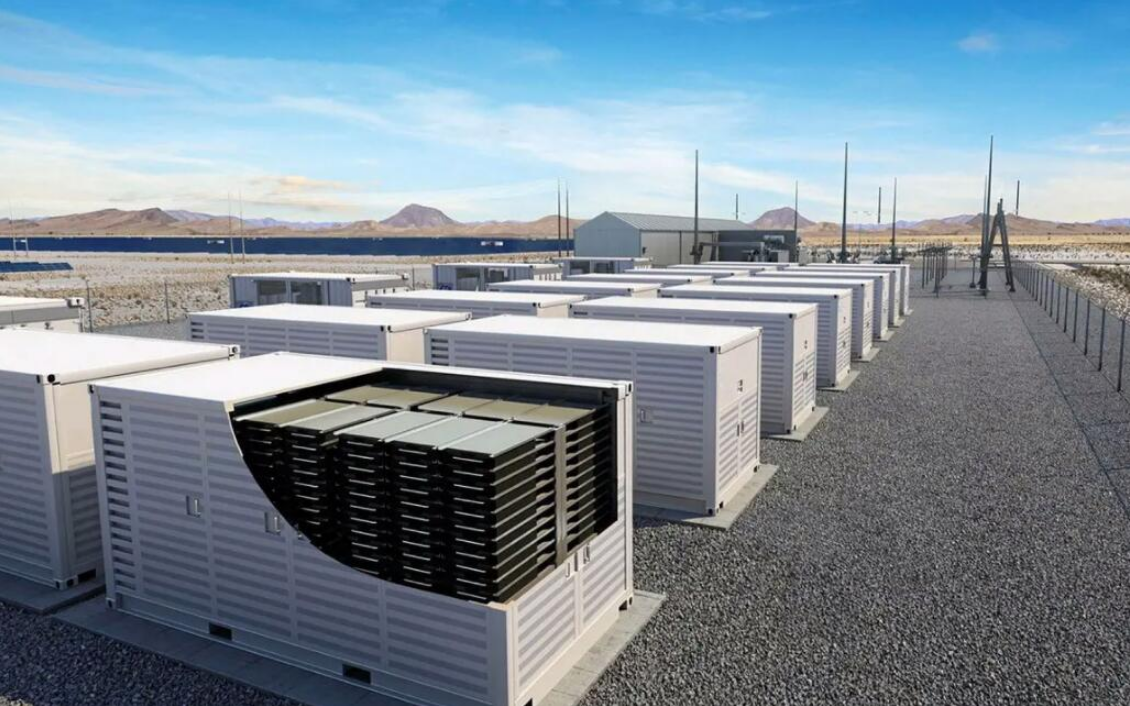
Reduced power costs: Microgrids can help buildings reduce power costs by charging when power prices are low and discharging when power prices are high.
Enhance quality of life: Microgrids can enhance the quality of life by providing a stable and reliable supply of electricity to buildings.
Improve the environment: Microgrids can be used in conjunction with renewable energy generation to increase the utilization of renewable energy, thus reducing carbon emissions.
The use of microgrids in buildings will have the following positive impacts:
Reduced building operating costs
Enhancement of building comfort
Reducing carbon emissions from buildings
Microgrids are important energy security in buildings and will play an important role in promoting green development of buildings.
The following are specific scenarios of microgrid applications in buildings:
Commercial Buildings: Microgrids can provide a reliable supply of electricity to commercial buildings to meet the power needs of lighting, air conditioning, elevators, and other equipment.
Industrial buildings: Microgrids can provide a stable power supply to industrial buildings to meet the power needs of production equipment.
Residential buildings: Microgrids can provide renewable electricity to residential buildings to meet the daily electricity needs of residents.
Public buildings: Microgrids can provide a reliable power supply to public buildings to meet the power needs of offices, medical care, education and other places.
Urban transportation: Commercial energy storage can be applied in urban transportation to provide backup power for public transportation and ensure the stable operation of the transportation system. At the same time, commercial energy storage can also help the transportation system to achieve energy storage and deployment, and improve the efficiency of energy use.
Commercial energy storage can be used in many areas of urban transportation, including:
Electric Vehicle Charging: Utilizing the energy storage system to provide charging services for electric vehicles to improve the efficiency of electric vehicle usage.
Bus charging: Utilizing the energy storage system to provide charging services for buses and improve the operational efficiency of buses.
Charging for rail transportation: Using energy storage system to provide charging service for rail transportation and improve the safety of rail transportation.
Street Lighting: Utilizing the energy storage system to provide lighting for street lights and improve the efficiency of street lighting.
Traffic signals: Using energy storage system to provide power supply for traffic signals and improve the stability of traffic signals.
The following are specific examples of commercial energy storage applications for urban transportation:
A charging station utilizes an energy storage system to provide charging services for electric vehicles, which can charge electric vehicles approximately 100,000 times per year.
A bus company uses an energy storage system to provide charging for buses, which can be used to charge buses approximately 1 million times per year.
A rail transit company uses energy storage systems to provide charging services for rail transit, which can charge rail transit approximately 10 million times per year.
A city utilizing an energy storage system to provide lighting for streetlights could save about $10 million a year in electricity costs.
A city using an energy storage system to power traffic signals could reduce signal failures by about 1,000 per year.
As the electrification of urban transportation accelerates, the demand for energy storage in urban transportation will continue to grow. Commercial energy storage, with its advantages of high flexibility and low cost, will play an increasingly important role in urban transportation.
Here are the potential benefits of commercial energy storage for urban transportation applications:
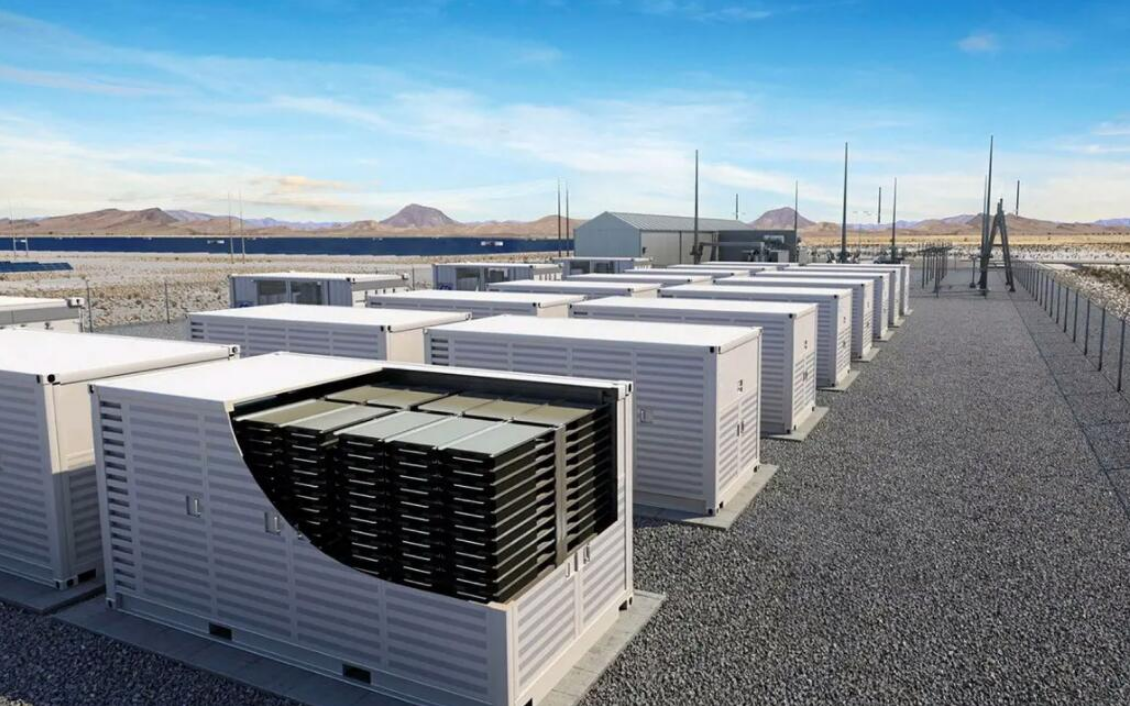
Improve the efficiency of electric vehicle use: Commercial energy storage can provide instant charging services for electric vehicles and improve the efficiency of electric vehicle use.
Improve the efficiency of bus operations: Commercial energy storage can provide nighttime charging services for buses, improving their operational efficiency.
Improve rail transportation safety: Commercial energy storage can provide backup power for rail transportation and improve rail transportation safety.
Improve the efficiency of street lighting: Commercial energy storage can provide intelligent control of street lighting and improve the efficiency of street lighting.
Improve traffic signal stability: Commercial energy storage can provide a stable power supply for traffic signals and improve their stability.
The use of commercial energy storage in urban transportation will have the following positive impacts:
Improving accessibility to urban transportation
Reducing the operating costs of urban transportation
Improving the environment for urban transportation
Commercial energy storage is an important guarantee for the electrification of urban transportation and will play an important role in promoting the green development of urban transportation.
The following are specific application scenarios for commercial energy storage in urban transportation:
EV charging: Commercial energy storage can be deployed at charging stations, parking lots, and other locations to provide charging services for electric vehicles.
Bus charging: Commercial energy storage can be deployed at bus yards, bus stops, and other locations to provide charging services for buses.
Charging for rail transit: Commercial energy storage can be deployed in rail transit vehicle sections, stations and other locations to provide charging services for rail transit.
Street Lighting: Commercial energy storage can be deployed on street light poles to provide lighting for street lights.
Traffic signals: Commercial energy storage can be deployed in traffic signal control boxes to provide power to traffic signals.
With the continuous development of commercial energy storage technology, the application of commercial energy storage in urban transportation will be more extensive.
Offshore platforms: Commercial energy storage can be used in offshore platforms to provide backup power for offshore oil drilling and other facilities, ensuring the stable operation of offshore facilities. At the same time, commercial energy storage can also help offshore facilities to realize energy storage and deployment, and improve energy utilization efficiency.
Commercial energy storage can be used in a number of areas on offshore platforms, including:
Peaking: Utilizing energy storage systems to reduce the cost of electricity for offshore platforms by charging when electricity prices are low and discharging when electricity prices are high.
Backup: Utilizing the energy storage system to provide backup power in the event of failure or blackout of the offshore platform to ensure the safe operation of the offshore platform.
Power Quality Improvement: Utilizing the energy storage system to regulate the power, improve the power quality of offshore platforms and increase the operating efficiency of equipment.
Renewable Energy Utilization: Utilizing energy storage systems to cooperate with renewable energy generation to improve the utilization rate of renewable energy.
The following are specific examples of commercial energy storage applications for offshore platforms:
An oil and gas company can save about $1 million a year in electricity costs by utilizing an energy storage system for peaking.
An offshore wind farm utilizes an energy storage system for backup to ensure the safe operation of the offshore wind farm.
An offshore photovoltaic (PV) plant utilizes an energy storage system to improve power quality and increase the efficiency of PV power generation.
An offshore wind farm using an energy storage system in conjunction with renewable energy generation can reduce carbon emissions by about 10,000 tons per year.
As offshore energy development accelerates, the demand for energy storage on offshore platforms will continue to grow. Commercial energy storage, with its advantages of flexibility and low cost, will play an increasingly important role in offshore platforms.
Here are the potential benefits of commercial energy storage for offshore platforms:
Reducing the cost of electricity: Commercial energy storage can help offshore platforms reduce the cost of electricity for offshore platforms by helping them to charge when electricity prices are low and discharge when prices are high.
Enhance safety: Commercial energy storage can provide backup power for offshore platforms and ensure the safe operation of offshore platforms.
Improved efficiency: Commercial energy storage can provide a stable and reliable supply of electricity to offshore platforms and improve the operational efficiency of equipment.
Reducing carbon emissions: Commercial energy storage can be used in conjunction with renewable energy generation to increase the utilization of renewable energy, thereby reducing carbon emissions.
The use of commercial energy storage in offshore platforms will have the following positive impacts:
Reduced operating costs for offshore platforms
Improving the safety of offshore platforms
Enhancing the efficiency of offshore platforms
Reducing carbon emissions from offshore platforms
Commercial energy storage is an important guarantee for offshore energy development and will play an important role in promoting green development of offshore energy development.
The following are specific scenarios for commercial energy storage in offshore platforms:
Oil and gas platforms: Commercial energy storage can provide power supply to oil and gas platforms to meet the platform's production and living needs.
Offshore wind farms: Commercial energy storage can provide backup power for offshore wind farms and ensure the safe operation of offshore wind farms.
Offshore PV plants: Commercial energy storage can provide power supply to offshore PV plants to meet the peak demand of PV plants.
Other offshore facilities: Commercial energy storage can provide power supply to other offshore facilities to meet their operational needs.
In conclusion, the application scenarios of commercial energy storage and microgrid technologies will continue to expand and involve more fields, providing strong support for the sustainable development of the energy industry.
Future Market Prospects
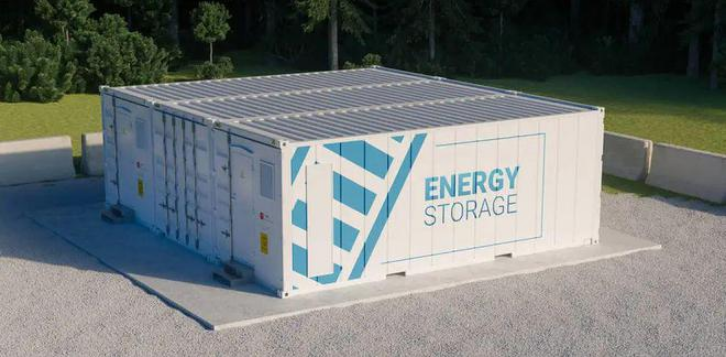
The development of commercial energy storage and microgrid technology will drive the rapid development of related industries and become an important driving force in the field of new and sustainable energy. In the future, commercial energy storage and microgrid technology will continue to maintain rapid growth, especially in the smart grid, distributed energy and other areas with broad application prospects. At the same time, with the continuous progress of new energy and sustainable energy technologies, commercial energy storage and microgrid technologies will also be upgraded and improved, making greater contributions to the sustainable development of the global energy sector.
Commercial energy storage and microgrid technologies are important technical means in the field of energy, and are of great significance in improving energy utilization efficiency, reducing energy consumption and emissions, and realizing sustainable energy development. With the continuous progress of new energy and sustainable energy technologies, commercial energy storage and microgrid technologies will also be upgraded and improved, making greater contributions to the sustainable development of the global energy sector.
Future Trends in Commercial Energy Storage
In the future, commercial energy storage and microgrid technologies will show the following trends:
Technology is constantly being upgraded and improved
Commercial energy storage and microgrid technologies will continue to be upgraded and improved to enhance energy storage and power supply capacity, reliability and stability. For example, with the development of new energy technologies, battery energy storage technology will gradually develop in the direction of greater efficiency and environmental protection; microgrid technology will gradually develop in the direction of intelligence and automation.
Expanding application scenarios
The application scenarios of commercial energy storage and microgrid technologies will continue to expand and involve more fields. For example, commercial energy storage will gradually be applied to new energy generation, distributed energy systems, industrial production and other fields; microgrids will gradually be applied to buildings, urban transportation, offshore platforms and other fields.
Continuous improvement of the industrial chain
The industrial chain of commercial energy storage and microgrid technologies will continue to improve, involving a number of links. For example, the research and development and production of energy storage equipment, such as batteries and supercapacitors, will be further developed; and the research and development and production of microgrid control systems and intelligent management systems will also be further strengthened.
Commercial energy storage and microgrid technologies are important technical means in the field of new and sustainable energy, and are of great significance in realizing the sustainable development of energy. With the continuous progress of new energy technologies and the continuous upgrading and improvement of commercial energy storage and microgrid technologies, the related industries will develop rapidly and make greater contributions to the sustainable development of the global energy sector.
Commercial energy storage refers to the efficient use of energy by using certain technological means in order to address the volatility of energy and the difference between peaks and valleys, and to store energy so that it can be used when there is a shortage of energy supply or a high demand for energy. Commercial energy storage has a very important position in modern energy systems and can realize market applications on the generation side, distribution side and user side.
Generation Side Applications
In the application of power generation side, commercial energy storage can be used as an auxiliary energy storage system, in the process of new energy power generation such as solar energy, wind energy and other new energy power generation, when solar energy, wind energy and other new energy power generation is unstable or insufficient, the commercial energy storage system can be adjusted by regulating the amount of energy storage and the amount of discharging to compensate for and regulate new energy power generation, so as to ensure the stability and reliability of new energy power generation. In addition, the commercial energy storage system can also be operated jointly with multiple energy storage systems to form a scale effect and further improve the stability and reliability of new energy power generation.
Distribution Side Applications
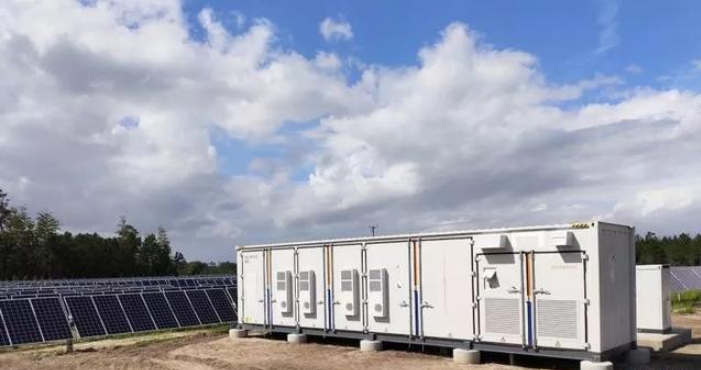
In distribution-side applications, commercial energy storage can be used as a distribution-side energy storage system for grid peak shaving and backup power. When the grid is under-supplied with energy or over-loaded, the commercial energy storage system can be used to achieve balance and stability of the grid through the regulation of the stored energy and the control of the discharged amount. In addition, the commercial energy storage system can also be used as a backup power source to provide reliable backup power for the grid, and to provide stable power supply for the grid in a timely manner in the event of grid failure or emergencies.
User Side Applications
In user-side applications, commercial energy storage can be used as a microgrid energy storage system for meeting users' individual needs for energy. With the increasing diversification of energy sources and the diversification of user needs, the user's requirements for energy are getting higher and higher. Commercial energy storage systems can store and release energy according to the user's energy demand, thus meeting the user's individualized demand for energy. In addition, the commercial energy storage system can also be linked with the user's smart meter, smart home and other equipment to achieve intelligent management and control of energy, thereby improving the efficiency of energy use and the user's quality of life.
To summarize, commercial energy storage has a wide range of market application prospects on the power generation side, distribution side and user side, and has a very important role. In the future, commercial energy storage will continue to play an important role and contribute to the efficient utilization of energy and sustainable development. Fourth, the demand of the energy market and the application of commercial energy storage
The application markets of commercial energy storage mainly include the power market, gas market and fossil energy market. In the electric power market, commercial energy storage is mainly used in auxiliary power supply, peak shaving and valley filling, grid stability control, etc.; in the gas market, commercial energy storage is mainly used in gas source peak shifting, gas storage peak shifting, gas storage and replenishment, etc.; in the fossil energy market, commercial energy storage is mainly used in gas energy storage, natural gas liquefaction energy storage, etc.. With the development of the energy market and technological progress, the application scope and market scale of commercial energy storage will continue to expand and deepen.
Technology trends in commercial energy storage
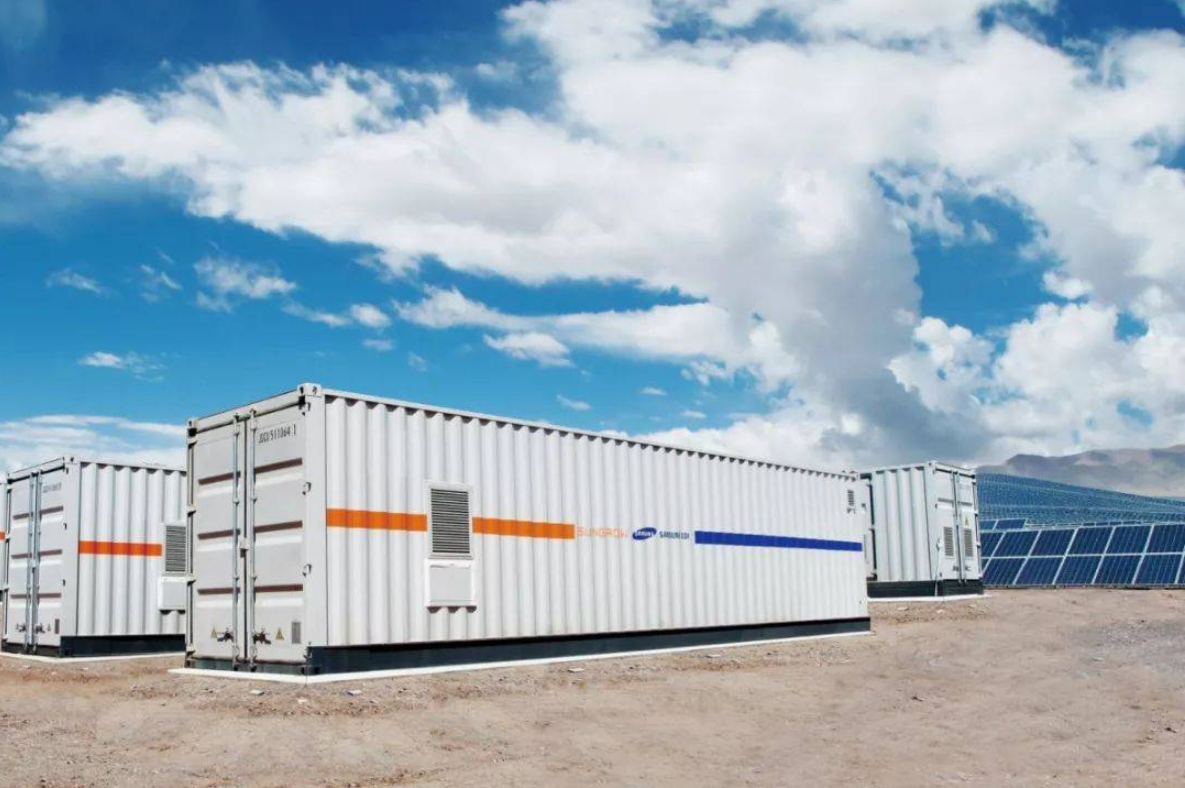
The development trend of commercial energy storage technology mainly includes technological innovation, market demand and policy support. In terms of technological innovation, commercial energy storage will continue to develop in the direction of high efficiency, low cost, high reliability and intelligence, such as the use of lithium-ion batteries, sodium-ion batteries, supercapacitors and other new battery technologies; in terms of market demand, commercial energy storage will pay more attention to the user demand and personalized customization to meet the diversified needs of users for energy; in terms of policy support, commercial energy storage will get more policy and financial In terms of policy support, commercial energy storage will receive more policy and financial support to promote the development and application of commercial energy storage technology.
The future of commercial energy storage
In the future, commercial energy storage will become an indispensable part of the energy system, with broad market prospects and development space. Commercial energy storage will be widely used in many fields such as power generation side, power distribution side and user side, which will continuously promote the efficient utilization and sustainable development of the energy system. At the same time, the technological innovation and market demand for commercial energy storage will also promote the continuous development and progress of commercial energy storage, realizing the deep integration and synergistic development of commercial energy storage in the energy field.
In the future development of commercial energy storage, technological innovation will be one of the important driving forces. With the continuous progress of science and technology, commercial energy storage technology will also continue to innovate and improve to better meet the needs of the energy market. For example, in terms of battery technology, the application of new battery technologies such as lithium-ion batteries and sodium-ion batteries will become more and more widespread, thus improving the energy density, cycle life and safety indicators of commercial energy storage. In terms of power system control, the application of new technologies such as artificial intelligence and the Internet of Things will further improve the degree of automation and the level of intelligence of the commercial energy storage system, thereby improving the stability and reliability of the system.
At the same time, the market demand for commercial energy storage will also drive the development and innovation of commercial energy storage technology. With the development of the energy market and the changing needs of users, commercial energy storage will pay more and more attention to user needs and personalized customization to meet the diversified needs of users for energy. For example, the commercial energy storage system will focus more and more on intelligent management and control, through the linkage with the user's smart meter, smart home and other equipment, to achieve intelligent management and control of energy, so as to improve the efficiency of the use of energy and the user's quality of life.
In terms of policy support, commercial energy storage will receive more policy and financial support to promote the development and application of commercial energy storage technology. For example, the government will introduce policies and measures that are more conducive to the development and application of commercial energy storage technology, such as tax incentives, subsidies, and standardization, in order to encourage commercial energy storage enterprises to increase their technology research and development and market expansion efforts, thereby promoting the development and application of commercial energy storage technology.
In conclusion, commercial energy storage will become an indispensable part of the energy system, with broad market prospects and development space. In the future development, commercial energy storage technology will continue to innovate and improve, the market demand will continue to change and develop, and policy support will be more and more conducive to the development and application of commercial energy storage technology. Commercial energy storage will become an important part of the energy system, making greater contributions to the efficient utilization of energy and sustainable development.
Commercial energy storage refers to the use of batteries, supercapacitors, compressed air and other energy storage technologies, to provide energy storage services for industrial production and power grid peaking and other areas of commercialized applications. Its constituent technologies mainly include battery energy storage, supercapacitor energy storage, compressed air energy storage and so on. These energy storage technologies have different characteristics and advantages in different fields and application scenarios.
Battery storage technology
Battery energy storage is currently one of the most dominant technologies in the commercial energy storage market, mainly using lithium-ion batteries, sodium-ion batteries, iron-nickel batteries and other technologies. Battery energy storage is characterized by high flexibility, high reliability, high energy storage density, and is suitable for energy storage needs in various fields. In industrial production, battery energy storage can be used to supply power to machines and equipment, or to provide backup power for factory production lines; in terms of grid peaking, battery energy storage can be used as a peaking power source to balance the grid load.
Ultracapacitor energy storage technology
Supercapacitor energy storage technology is a high-performance electrochemical energy storage technology with the advantages of fast charging speed, high energy storage density and long life. Ultracapacitor energy storage is mainly used in industrial production to provide backup power for machines and equipment, or to provide backup power for factory production lines. In terms of grid peaking, supercapacitor energy storage can be used as an auxiliary peaking power source to balance the grid load.
Compressed air energy storage technology
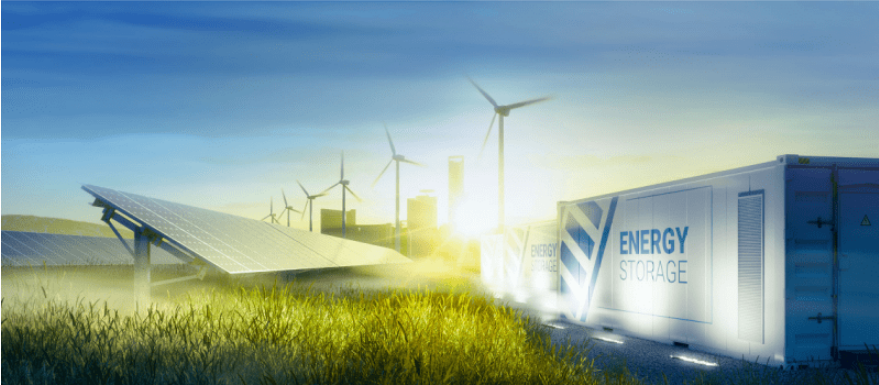
Compressed air energy storage technology is a technology that utilizes air compression and release to generate energy storage. It has the advantages of high energy storage density, long life and environmental friendliness, and is suitable for use in areas such as grid peaking and wind power generation. In industrial production, compressed air energy storage can be used to power machines and equipment, or to provide backup power for factory production lines.
In conclusion, commercial energy storage technology has a wide range of application prospects in fields such as industrial production and grid peaking. With the continuous development and maturity of energy storage technology, its application scenarios will continue to expand. With the continuous development of new energy sources, commercial energy storage technologies such as battery energy storage technology, supercapacitor energy storage technology and compressed air energy storage technology are also being upgraded and improved.
With regard to battery energy storage technologies, solid-state batteries and supercapacitor energy storage technologies are currently being developed and promoted. Solid-state batteries use solid-state electrolytes to replace traditional liquid electrolytes, providing higher safety and longer service life. Supercapacitor energy storage technology, on the other hand, can store more energy when charging, and at the same time has a higher energy density and a longer lifespan.
The aspect of supercapacitor energy storage technology has also been developing in recent years. In addition to the traditional lead-acid supercapacitors, new materials such as sodium ion supercapacitors and aluminum air supercapacitors have emerged. These new supercapacitors have higher energy density, longer service life and lower charging and discharging temperatures, and have a wide range of application prospects in industrial production and power grid peaking and other fields.
With regard to compressed air energy storage technology, the application of compressed air energy storage technology is becoming more and more widespread as the issues of climate change and energy security become more and more prominent. In recent years, domestic and foreign enterprises are actively promoting the research and development and application of compressed air energy storage technology.
In conclusion, the application of commercial energy storage technology in the fields of industrial production and grid peaking is very promising. With the continuous upgrading and improvement of energy storage technology, we believe that commercial energy storage technology will play an increasingly important role and contribute to the realization of sustainable development of clean energy. With the development and application of new energy, the demand for commercial energy storage technology is also increasing. In addition to the aforementioned battery energy storage, supercapacitor energy storage and compressed air energy storage technologies, there are other energy storage technologies that are also emerging and being applied.
For example, lithium-ion battery technology is a very mature and widely used energy storage technology. In the field of electric vehicles, lithium-ion batteries are widely used to improve the energy density and range of vehicles. In grid energy storage, lithium-ion batteries can be used as the main energy storage device for scenarios such as peak shifting and backup power.
In addition, superconducting energy storage technology is also a very promising energy storage technology. Superconducting energy storage technology uses superconducting cables made of superconducting materials, which can achieve a superconducting state at high temperatures and high pressures, thus realizing efficient storage and release of energy. In terms of grid energy storage, superconducting energy storage technology can be used as the main energy storage device for scenarios such as peak shifting and backup power.
In addition, ultra-high temperature superconducting energy storage technology is also a very cutting-edge energy storage technology. Ultra-high-temperature superconducting energy storage technology uses superconducting cables made of high-temperature superconducting materials, which can realize a superconducting state at high temperature and high pressure, thus realizing efficient storage and release of energy. In terms of grid energy storage, ultra-high-temperature superconducting energy storage technology can be used as the main energy storage device for scenarios such as peak shifting and backup power.
In conclusion, the development and application of commercial energy storage technology has a very broad prospect. With the continuous upgrading and improvement of energy storage technology, we believe that commercial energy storage technology will play a role in more fields and make greater contributions to the realization of sustainable development of clean energy.
The promise of commercial energy storage technologies is not limited to battery storage, supercapacitor storage and compressed air storage technologies, but there are other energy storage technologies emerging and being used as well.
For example, sodium-ion battery technology is a new type of energy storage technology characterized by high energy density, long life and low environmental pollution. In the field of electric vehicles, sodium-ion batteries can be used to improve the energy density and range of automobiles, and have great application prospects.
In addition, metal-air battery technology is also a very promising technology for energy storage. Metal-air batteries use metal and air as electrode materials and are characterized by high energy density, high efficiency and long life. In terms of grid energy storage, metal-air batteries can be used as the main energy storage device for scenarios such as peak shifting and backup power.
In addition, there are some other energy storage technologies, such as fuel cell technology and liquid flow battery technology, which are being developed and applied.
In conclusion, the application prospect of commercial energy storage technology is very broad, and the continuous emergence and application of various new types of energy storage technologies provide a broader space and opportunity for the development of commercial energy storage technology. With the continuous upgrading and improvement of energy storage technology, we believe that commercial energy storage technology will play a role in more fields and make greater contributions to the realization of sustainable development of clean energy.
Commercial energy storage is a way of storing electrical energy in the power system to cope with fluctuations in power demand, peak and valley differentials, and other problems. This paper will present the history, current status and future development of commercial energy storage.
History of Commercial Energy Storage

The history of commercial energy storage dates back to the early 1900s. Initially, commercial energy storage was realized by storing electricity in metal or plastic energy storage containers. However, due to the high cost of storage containers, this type of energy storage was not widely used.
As power technology has evolved, so have the technologies for commercial energy storage. In the 1950s and 1960s, researchers began to explore new energy storage technologies such as liquid flow batteries and fuel cells. The emergence of these technologies led to the further development of commercial energy storage.
Current status of commercial energy storage
Currently, there are two main types of commercial energy storage: battery storage and heat/cool storage.
Battery storage
Battery energy storage is the most common type of commercial energy storage. Currently, the most common battery energy storage devices on the market are lead-acid batteries, lithium-ion batteries and sodium-ion batteries. These battery energy storage devices have the advantages of large capacity, high charging and discharging efficiency, and long life, and can be widely used in power systems.
Heat/cold storage
Heat/cool storage is a way of coping with fluctuations in electricity demand by storing heat or cold energy. Currently, the most common heat/cool storage devices on the market are hydrogen storage tanks and liquid ammonia tanks. These heat/cool storage devices have the advantages of high energy density and high energy storage efficiency, and can be widely used in power systems.
The future of commercial energy storage
As the global demand for renewable energy continues to grow, commercial energy storage will be more widely used in the future. Here are a few directions for the future development of commercial energy storage:
Research on new energy storage technologies
Currently, commercial energy storage technology is relatively mature, but there are still some problems, such as high cost and insufficient capacity. Therefore, in the future, researchers will explore more efficient and low-cost energy storage technologies, such as sodium-ion batteries and lithium-sulfur batteries.
Combining commercial energy storage with renewable energy
With the widespread application of renewable energy, commercial energy storage will play a more important role in the development and utilization of renewable energy. In the future, commercial energy storage will be more closely integrated with renewable energy to cope with the volatility of renewable energy.
Commercial energy storage meets electric vehicles
The emergence of electric vehicles will give a huge boost to the development of commercial energy storage technology. In the future, commercial energy storage will be more closely integrated with electric vehicles to meet the energy storage needs of electric vehicles.
In summary, commercial energy storage is an indispensable part of the power system, and its future development will be more extensive and in-depth. Fourth, the future development of commercial energy storage
As the global demand for renewable energy continues to grow, commercial energy storage will be more widely used in the future. In the future, commercial energy storage technologies will continue to be improved and refined to cope with the changing needs in the power system.
Intelligent commercial energy storage systems
In the future, commercial energy storage systems will become more and more intelligent. Intelligent commercial energy storage systems can automatically adjust the charging and discharging of energy storage equipment according to the demand of the power system to achieve the best energy storage effect. Intelligent commercial energy storage systems can also be coordinated with other power system equipment to achieve optimal operation of the power system.
New application scenarios for commercial energy storage
In the future, commercial energy storage will be used in more application scenarios. In addition to the electric power system, commercial energy storage can also be applied to electric vehicles, home energy storage and other fields. In the field of electric vehicles, commercial energy storage can provide energy storage services for electric vehicles to solve the problem of difficult charging of electric vehicles. In the field of household energy storage, commercial energy storage can provide energy storage services for households to solve the problem of large fluctuations in household electricity consumption.
Safety issues in commercial energy storage
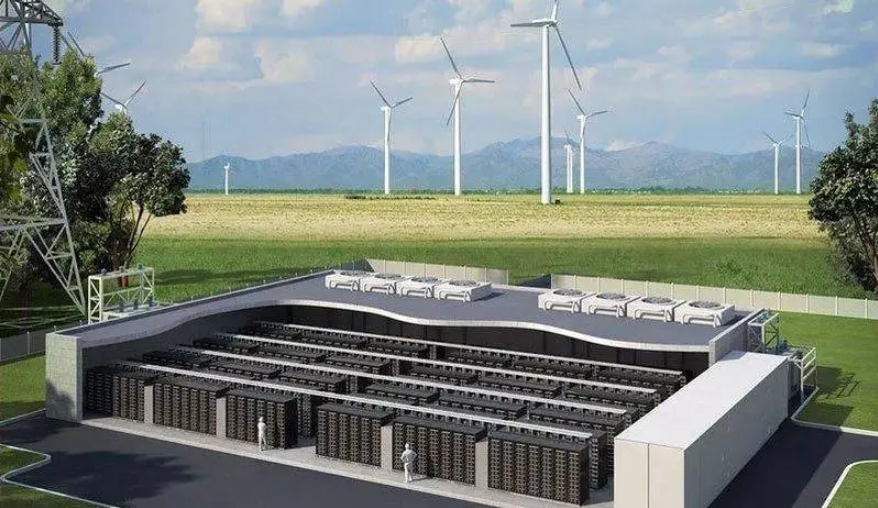
The safety of commercial energy storage has always been an important issue in the development of commercial energy storage technology. In the future, commercial energy storage technology will pay more attention to safety issues and take more effective measures to ensure the safety of commercial energy storage systems. For example, the use of more reliable battery materials, strengthen the monitoring and maintenance of commercial energy storage systems.
In conclusion, the future development of commercial energy storage technology will be more extensive and in-depth. With the continuous improvement and refinement of technology, commercial energy storage will become an integral part of the power system, providing more reliable and efficient energy storage services. In the future, commercial energy storage technology will continue to develop and improve to respond to the changing needs of the power system. In addition to the previously mentioned new energy storage technologies and the combination of commercial energy storage and renewable energy, commercial energy storage technology will also develop in the following directions:
Application of large-scale commercial energy storage systems
Currently, the application of commercial energy storage technology is mainly focused on small-scale power systems. In the future, as the scale of the power system continues to expand, the application of large-scale commercial energy storage systems will become more widespread. For example, in large-scale power plants, commercial energy storage systems can provide energy storage services for power plants to balance the difference between the power plant's generation load and its electricity consumption load.
Digital applications of commercial energy storage technologies
In the future, commercial energy storage technology will be more digitalized and intelligent. Digitalized commercial energy storage systems can monitor and control energy storage equipment through sensors and intelligent control systems to improve energy storage efficiency and stability. Digital commercial energy storage systems can also optimize and adjust the energy storage system through technologies such as the Internet and big data analysis to achieve the best energy storage results.
International cooperation in commercial energy storage technologies
The development of commercial energy storage technology requires international cooperation and technology exchange. In the future, cooperation and exchange of commercial energy storage technologies will be strengthened among countries to jointly promote the development and application of commercial energy storage technologies. For example, countries can work together to carry out research and development of commercial energy storage technologies and share experience and technical achievements in the application of commercial energy storage technologies, so as to promote the global application of commercial energy storage technologies.
In summary, commercial energy storage technology will develop in the direction of large-scale application, digitalization and international cooperation. With the continuous development and improvement of commercial energy storage technology, commercial energy storage will become an indispensable part of the power system, providing people with more reliable and efficient energy storage services. Fourth, the future development of commercial energy storage
As the global demand for renewable energy continues to increase, commercial energy storage will be more widely used in the future. In the future, commercial energy storage technologies will continue to be improved and refined to cope with the changing needs in the power system.
Intelligent commercial energy storage systems
In the future, commercial energy storage systems will become more and more intelligent. Intelligent commercial energy storage systems can automatically adjust the charging and discharging of energy storage equipment according to the demand of the power system to achieve the best energy storage effect. Intelligent commercial energy storage systems can also coordinate with other power system equipment to achieve optimal operation of the power system. In addition, the intelligent commercial energy storage system can also monitor and control the energy storage system in real time through the Internet and big data analysis and other technologies to improve the efficiency and stability of energy storage.
New application scenarios for commercial energy storage
In the future, commercial energy storage will be used in more application scenarios. In addition to the electric power system, commercial energy storage can also be applied to electric vehicles, home energy storage and other fields. In the field of electric vehicles, commercial energy storage can provide energy storage services for electric vehicles to solve the problem of difficult charging of electric vehicles. In the field of household energy storage, commercial energy storage can provide energy storage services for households to solve the problem of large fluctuations in household electricity consumption. In the future, commercial energy storage technology can also be applied to agriculture, industry and other fields to realize an effective supplement to the power system.
Safety issues in commercial energy storage
The safety of commercial energy storage has always been an important issue in the development of commercial energy storage technology. In the future, commercial energy storage technology will pay more attention to safety issues and take more effective measures to ensure the safety of commercial energy storage systems. For example, the use of more reliable battery materials, strengthen the monitoring and maintenance of commercial energy storage systems. At the same time, the construction of commercial energy storage systems also needs to take into account the risks that may exist in the process of production, use and maintenance, and take corresponding measures to prevent and respond.
Sustainable development of commercial energy storage
The sustainable development of commercial energy storage is one of the important directions for the development of commercial energy storage technology. The sustainable development of commercial energy storage technology needs to be considered from the following aspects:
Sustainable utilization of energy resources. The development of commercial energy storage technology needs to take into account the sustainable utilization of energy resources, the adoption of renewable energy sources and the future, the sustainable development of commercial energy storage technology needs to be considered from the following aspects:
Sustainable utilization of energy resources. The development of commercial energy storage technologies needs to take into account the sustainable use of energy resources, the adoption of renewable and clean energy sources and the reduction of dependence on fossil energy sources, thus achieving environmental protection and sustainable development.
Stability and fairness of the energy market. The application of commercial energy storage technologies needs to be harmonized with the rules and policies of the electricity market to ensure the stability and fairness of the energy market, to prevent market monopoly and unfair competition, and to provide consumers with more just and transparent energy services.
Conservation of energy consumption and environmental protection. The application of commercial energy storage technology needs to be coordinated with the conservation of energy consumption and environmental protection, to promote energy conservation and emission reduction, to reduce carbon and pollutant emissions, and to realize the goal of sustainable development.
Innovation and development of energy science and technology. The sustainable development of commercial energy storage technology needs to be coordinated with the innovation and development of energy science and technology, to strengthen technological research and development and innovation, to promote the transformation and application of technology, and to contribute to the development and progress of the energy sector.
In the future, the development of commercial energy storage technology needs to take these aspects fully into account, formulate corresponding policies and measures, strengthen international cooperation and exchanges, and promote the sustainable development of commercial energy storage technology so as to make greater contributions to the sustainable development of human society. With the development of commercial energy storage technology, commercial energy storage systems will be more widely used in the future. However, the application of commercial energy storage technology still faces some challenges, such as safety, cost, and technical reliability. Therefore, the future development of commercial energy storage technology needs to focus on solving these problems.
Security issues
The safety issue of commercial energy storage technology has been an important issue in the development of commercial energy storage technology. The safety problems of commercial energy storage systems mainly include the failure of energy storage equipment and the failure of energy storage systems. In the future, commercial energy storage technology needs to take more effective measures to ensure the safety of commercial energy storage systems, such as adopting more reliable battery materials and strengthening the monitoring and maintenance of commercial energy storage systems. At the same time, the construction of commercial energy storage systems also needs to take into account the risks that may exist during its production, use and maintenance, and take corresponding measures to prevent and respond.
Cost issues
The cost of commercial energy storage technology has been an important issue in the application of commercial energy storage technology. The cost of commercial energy storage system includes the cost of energy storage equipment, the design and construction cost of the system, and so on. In the future, commercial energy storage technology needs to reduce the cost of commercial energy storage systems and improve the competitiveness of commercial energy storage systems through technological innovation and industrial upgrading.
Technical reliability issues
The technical reliability issues of commercial energy storage technology mainly include the life span of the energy storage equipment and the stability of the energy storage system. In the future, commercial energy storage technology needs to strengthen the research and development and production of energy storage equipment, and improve the life and reliability of energy storage equipment. At the same time, the design and construction of commercial energy storage systems also need to take into account the stability and reliability of the system, and take corresponding measures to ensure the normal operation of commercial energy storage systems.
International cooperation issues
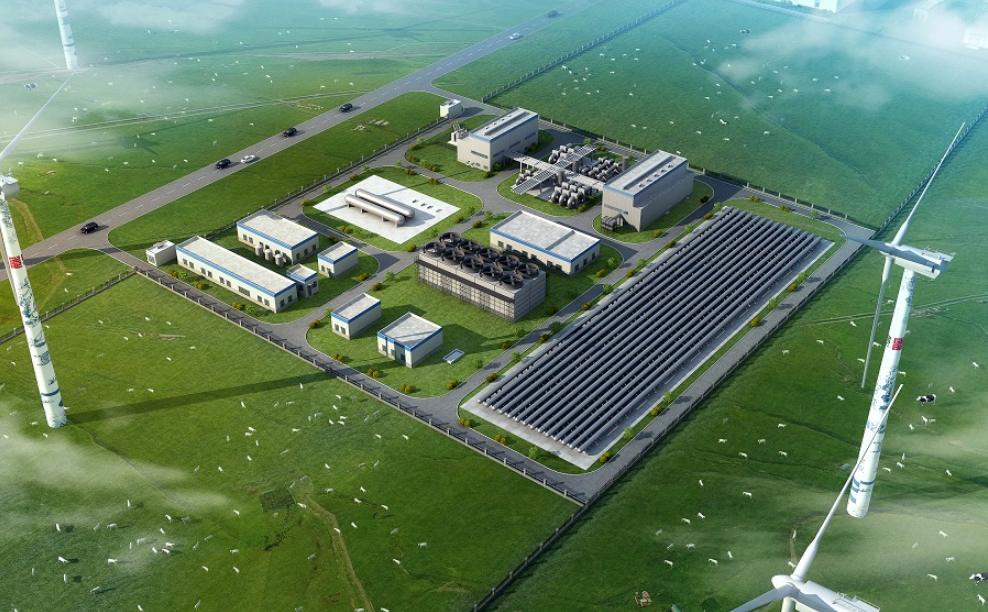
The development of commercial energy storage technology requires international cooperation and technology exchange. In the future, cooperation and exchange of commercial energy storage technologies will be strengthened among countries to jointly promote the development and application of commercial energy storage technologies. For example, countries can work together to carry out research and development of commercial energy storage technologies and share experience and technical achievements in the application of commercial energy storage technologies, so as to promote the global application of commercial energy storage technologies.
In summary, the future development of commercial energy storage technology needs to focus on solving the problems of safety, cost and technical reliability. The development of commercial energy storage technology needs to strengthen international cooperation and technical exchanges to jointly promote the development and application of commercial energy storage technology. In the future, commercial energy storage technology will develop in the direction of more intelligent and sustainable, providing people with more reliable and efficient energy storage services. In the future development of commercial energy storage technology, there are still some important directions that deserve attention.
First of all, the digitalization and intelligence of commercial energy storage technology is one of the important directions for future development. A digitized commercial energy storage system can monitor and control the energy storage equipment through sensors and intelligent control systems to improve energy storage efficiency and stability. Intelligent commercial energy storage systems can also monitor and control the energy storage system in real time through technologies such as the Internet and big data analysis to achieve the best energy storage results.
Secondly, the application scenarios of commercial energy storage technology will be more diversified. In addition to the electric power system, commercial energy storage can also be applied to electric vehicles, home energy storage and other fields. In the field of electric vehicles, commercial energy storage can provide energy storage services for electric vehicles to solve the problem of difficult charging of electric vehicles. In the field of household energy storage, commercial energy storage can provide energy storage services for households to solve the problem of large fluctuations in household electricity consumption.
Third, the safety of commercial energy storage technology needs to be addressed more effectively. In the future, commercial energy storage technology needs to take more effective measures to ensure the safety of commercial energy storage systems, for example, using more reliable battery materials, strengthening the monitoring and maintenance of commercial energy storage systems. At the same time, the construction of commercial energy storage systems also needs to take into account the risks that may exist in the process of production, use and maintenance, and take corresponding measures to prevent and respond.
Finally, the sustainable development of commercial energy storage technology is also one of the important directions for future development. The sustainable development of commercial energy storage technology needs to be considered from the following aspects: sustainable utilization of energy resources, stability and fairness of the energy market, conservation of energy consumption and environmental protection, and innovation and development of energy science and technology. In the future, the development of commercial energy storage technology needs to take these aspects into full consideration, formulate corresponding policies and measures, strengthen international cooperation and exchanges, and promote the sustainable development of commercial energy storage technology, so as to make greater contributions to the sustainable development of human society.
In summary, the future development of commercial energy storage technology needs to focus on issues such as digitalization and intelligence, diversified application scenarios, safety and sustainable development. The development of commercial energy storage technology needs to strengthen international cooperation and technical exchanges to jointly promote the development and application of commercial energy storage technology. In the future, commercial energy storage technology will develop in the direction of more intelligent and sustainable, providing people with more reliable and efficient energy storage services. In the future, the development of commercial energy storage technology will pay more attention to the research and development of digitalization and intelligence. With the continuous development of the Internet of Things and big data technology, the commercial energy storage system will become more intelligent and be able to realize real-time monitoring and control of the energy storage system through the Internet and big data analysis and other technologies, in order to improve the efficiency and stability of energy storage. At the same time, commercial energy storage technology will also be combined with renewable energy, smart grid and other technologies to form a complete energy storage ecosystem.
In addition, the application scenarios of commercial energy storage technology will be more diversified. In the future, commercial energy storage technology can be applied not only in the electric power system, but also in electric vehicles, home energy storage and other fields. In the field of electric vehicles, commercial energy storage can provide energy storage services for electric vehicles to solve the problem of difficult charging of electric vehicles. In the field of household energy storage, commercial energy storage can provide energy storage services for households to solve the problem of large fluctuations in household electricity consumption.
In order to solve the safety problems that may exist in the application of commercial energy storage technology, future research will pay more attention to the reliability and safety of energy storage equipment. The reliability of energy storage equipment is the basis for the application of commercial energy storage technology, and in the future, more reliable battery materials will be used, and the monitoring and maintenance of commercial energy storage systems will be strengthened in order to improve the reliability of energy storage equipment. At the same time, the construction of commercial energy storage systems also needs to take into account the risks that may exist in the process of production, use and maintenance, and take corresponding measures to prevent and respond.
Finally, the sustainable development of commercial energy storage technology is also one of the important directions for the future. Future research will pay more attention to the sustainable utilization of energy resources, the stability and fairness of the energy market, the conservation of energy consumption and environmental protection, and the innovation and development of energy science and technology. In order to realize the sustainable development of commercial energy storage technology, it is necessary to formulate corresponding policies and measures, strengthen international cooperation and exchanges, and promote the sustainable development of commercial energy storage technology, so as to make greater contributions to the sustainable development of human society.
In summary, the future development of commercial energy storage technology will pay more attention to the research and development of digitalization and intelligence, diversified application scenarios, safety and sustainable development. The development of commercial energy storage technology needs to strengthen international cooperation and technical exchanges to jointly promote the development and application of commercial energy storage technology. In the future, commercial energy storage technology will develop in the direction of more intelligent and sustainable, providing people with more reliable and efficient energy storage services. With the continuous development and improvement of commercial energy storage technology, commercial energy storage will be more widely used in the future. The development of commercial energy storage technology needs to focus on digitalization and intelligence, while also focusing on the reliability and safety of commercial energy storage systems, as well as the sustainable use of energy resources and other aspects. The future development of commercial energy storage technology will be an all-encompassing, multi-dimensional process.
First, digitalization and intelligence of commercial energy storage technology will be one of the important directions in the future. A digitized commercial energy storage system can monitor and control the energy storage equipment through sensors and intelligent control systems to improve energy storage efficiency and stability. Intelligent commercial energy storage systems can also monitor and control the energy storage system in real time through the Internet and big data analysis and other technologies to achieve the best energy storage results. Digital and intelligent commercial energy storage systems will become the mainstream of the future, and can meet people's needs for more efficient, stable and safer energy storage.
Secondly, the diversified application scenarios of commercial energy storage technology will become more obvious. In addition to the electric power system, commercial energy storage can also be applied to electric vehicles, home energy storage and other fields. In the field of electric vehicles, commercial energy storage can provide energy storage services for electric vehicles to solve the problem of difficult charging of electric vehicles. In the field of household energy storage, commercial energy storage can provide energy storage services for households to solve the problem of large fluctuations in household electricity consumption. The diversified application scenarios of commercial energy storage technology will bring more choices and convenience to people.
In addition, the safety of commercial energy storage technologies needs to be addressed more effectively. In the future, commercial energy storage technology needs to take more effective measures to ensure the safety of commercial energy storage systems, for example, the use of more reliable battery materials, strengthen the monitoring and maintenance of commercial energy storage systems. At the same time, the construction of commercial energy storage systems also needs to take into account the risks that may exist in the process of its production, use and maintenance, and take corresponding measures to prevent and respond.
Finally, the sustainable development of commercial energy storage technology is also one of the important directions for the future. The sustainable development of commercial energy storage technology needs to be considered from the following aspects: sustainable utilization of energy resources, stability and fairness of the energy market, conservation of energy consumption and environmental protection, and innovation and development of energy science and technology. In the future, the development of commercial energy storage technology needs to take these aspects into full consideration, formulate corresponding policies and measures, strengthen international cooperation and exchanges, and promote the sustainable development of commercial energy storage technology, so as to make greater contributions to the sustainable development of human society.
In summary, the future development of commercial energy storage technology will be an all-round and multi-dimensional process. The research and development of digitalization and intelligence, diversified application scenarios, safety and sustainable development will be the important direction of commercial energy storage technology in the future. The development of commercial energy storage technology needs to strengthen international cooperation and technical exchanges to jointly promote the development and application of commercial energy storage technology. In the future, commercial energy storage technology will develop in the direction of more intelligent and sustainable, providing people with more reliable and efficient energy storage services.
Join us to tap into the growing energy storage market
With the advancement of global energy transition and the rapid development of renewable energy, energy storage technology is leading the change of the global energy industry.
1, the proportion of renewable energy power generation will continue to increase, and renewable energy power generation is characterized by intermittency, volatility, etc., the energy storage system can help the power grid to smooth power fluctuations, improve grid efficiency.
2, with the deepening of the power market reform, energy storage system can participate in the peak and valley electricity price differential trading, auxiliary services market, etc., to obtain revenue.
3, with the industrial and commercial enterprises energy saving and emission reduction, improve energy efficiency continue to promote, energy storage system can help industrial and commercial enterprises to reduce electricity costs, improve operational efficiency.
Bloomberg New Energy Finance forecasts that $262 billion will be invested globally in the deployment of 345GW/999GWh of new energy storage systems over the next ten years, and that cumulative deployment of new energy storage systems will reach 358GW/1028GWh globally by 2030. the global energy storage market is set to maintain a high rate of growth at a CAGR of 33% until 2030, as climate extremes and energy scarcity Installed energy storage in some countries and regions will grow at more than 50%.
We are a professional energy storage company with 37 years of continuous operation, rich experience and mature products. We sincerely invite you to become our sales channel partner and develop the market together.
We will provide you with the following support:
Provide high quality products and services
Provide perfect pre-sale, in-sale and after-sale service
Provide professional marketing support
Can provide customers with the following solutions:
Grid peaking:Energy storage systems provide peaking services for the grid through peak and valley tariff differential trading, auxiliary service market, and power peaking. It helps the grid to smooth out power fluctuations, improve grid efficiency and cope with power shortages.
Energy saving in factories:The energy storage system can help factories save electricity costs, improve productivity, reduce costs and minimize pollution through peak shaving and valley filling, self-generation and self-consumption in factories, and charging of electric vehicles.
Commercial operation:Energy storage systems can help commercial enterprises reduce electricity costs and improve operational efficiency through peak shaving and valley filling, emergency power supply, and data centers.
Photovoltaic power plant developers and EPC enterprises:Photovoltaic power plants are one of the important application scenarios for energy storage systems. PV power plant developers and EPC companies need a large number of energy storage systems during the development and construction of PV power plants. We provide turnkey solutions for integrating energy storage with solar PV systems.
Sellers of energy storage systems:We offer a wide range of energy storage systems and services to help you reach your customers.
We are looking for partners to help us grow our business and expand into the global energy storage market. If you are interested in partnering with us, please contact us for more information.
Contact us today to learn how we can help you enter the growing energy storage market.

